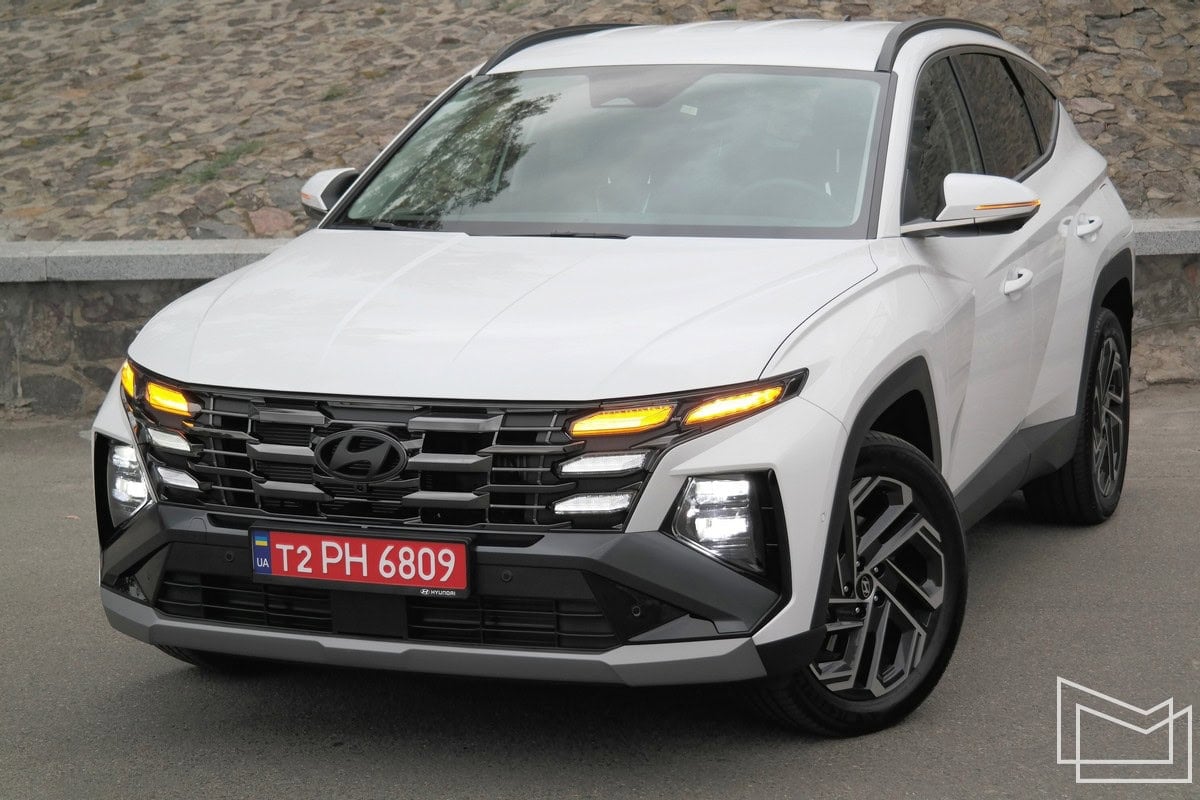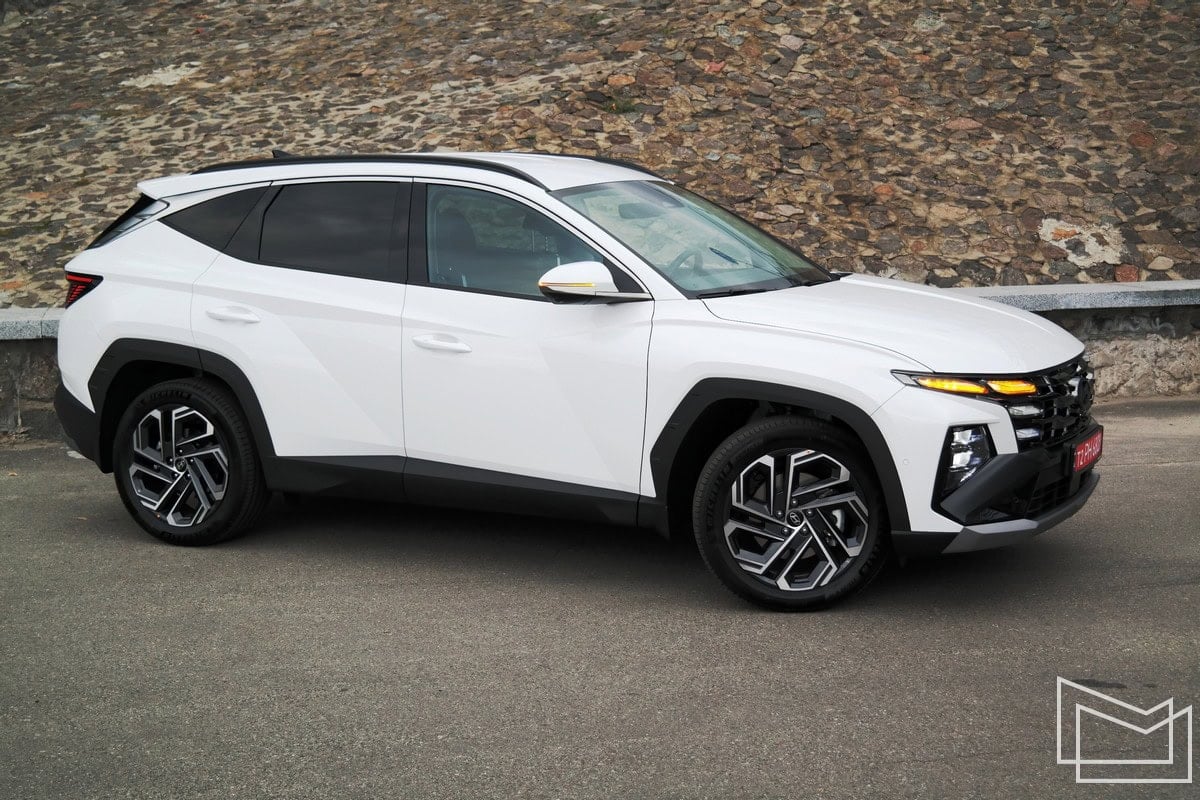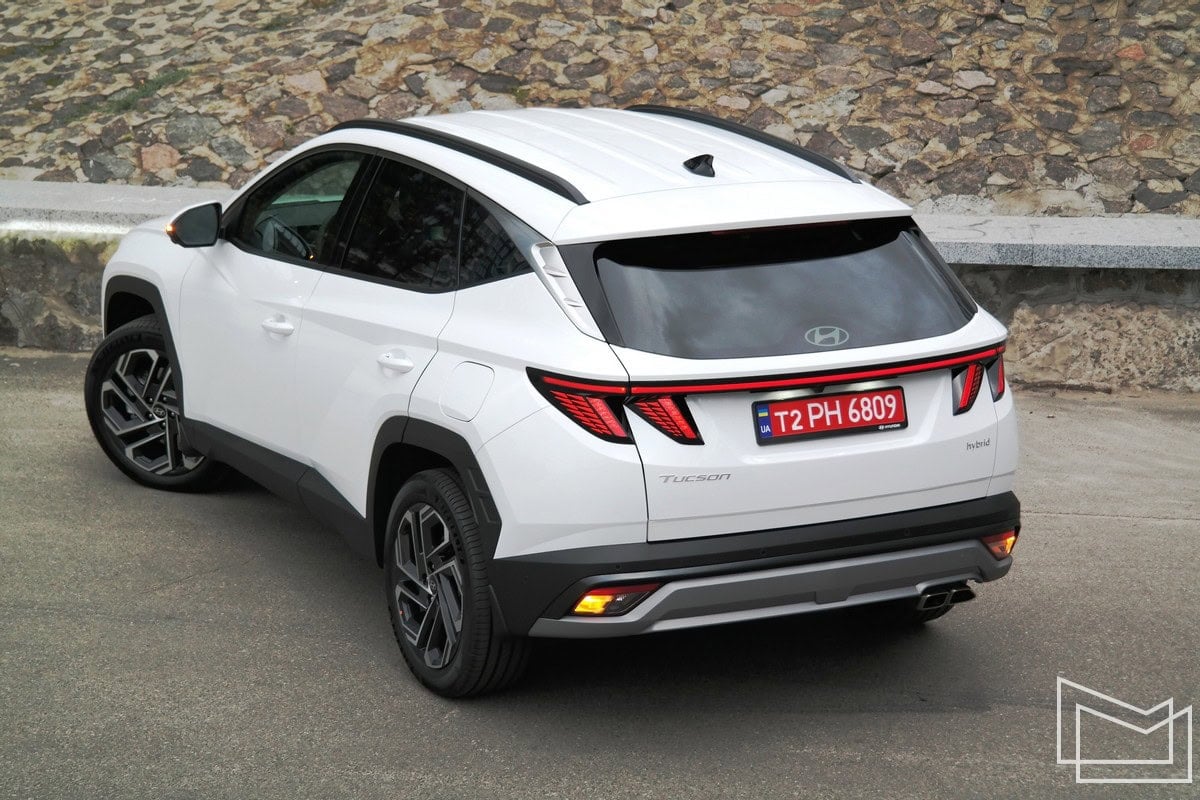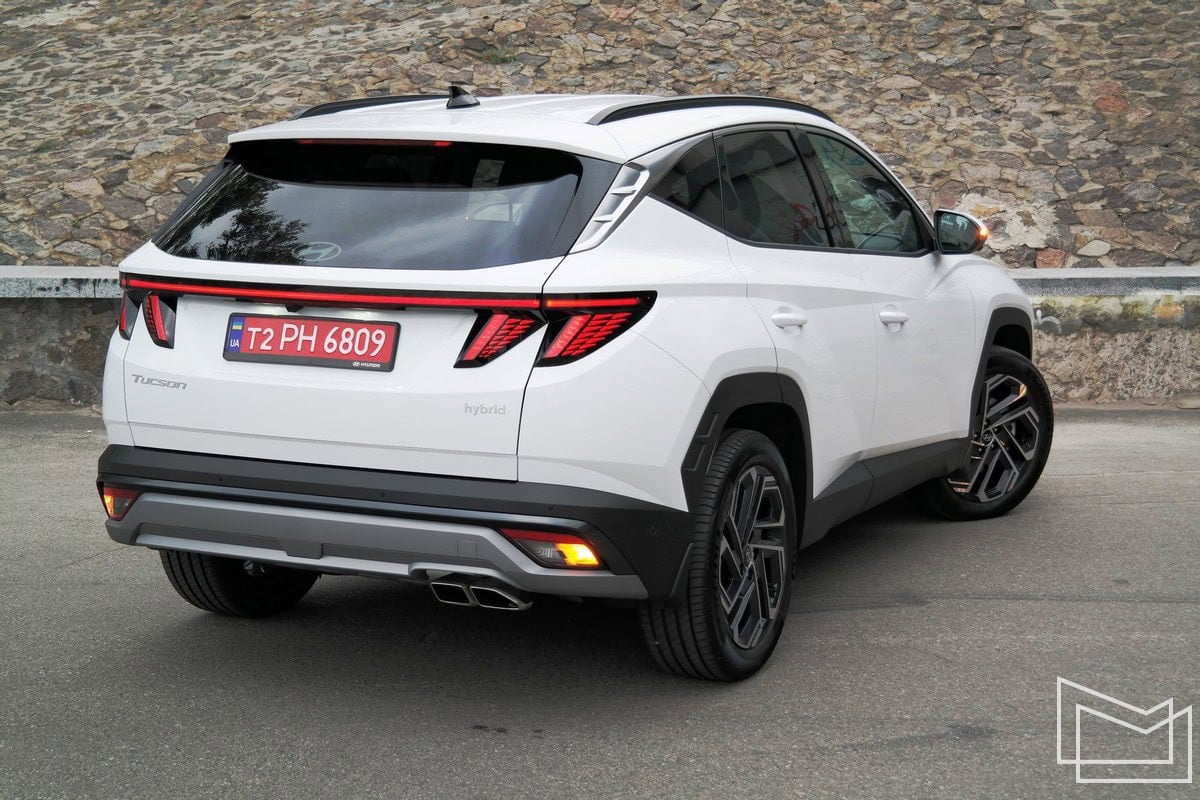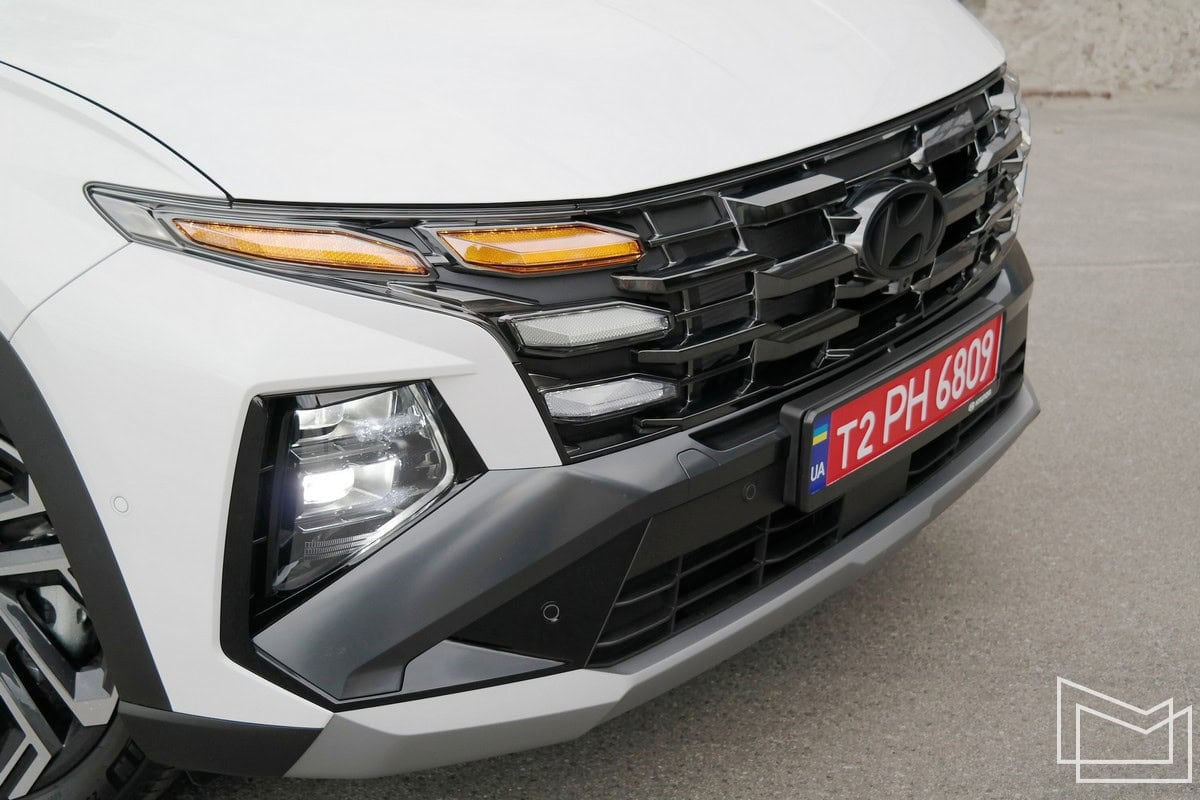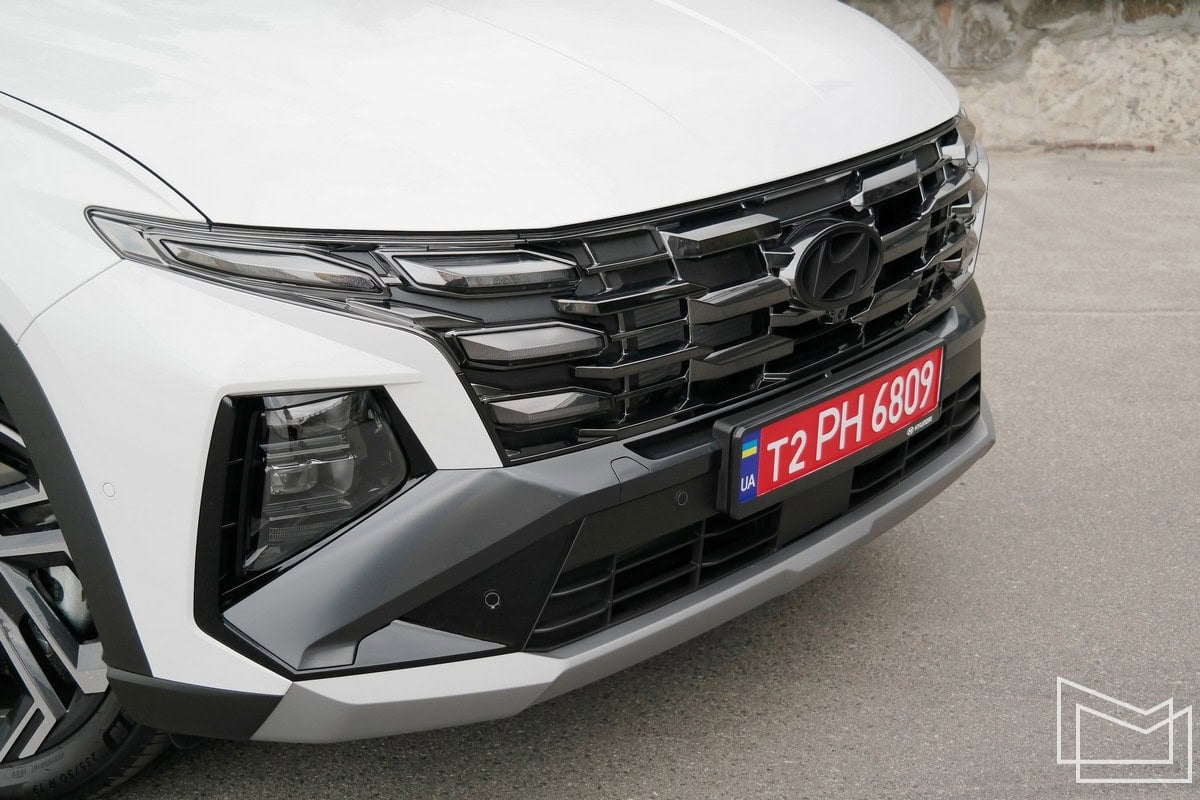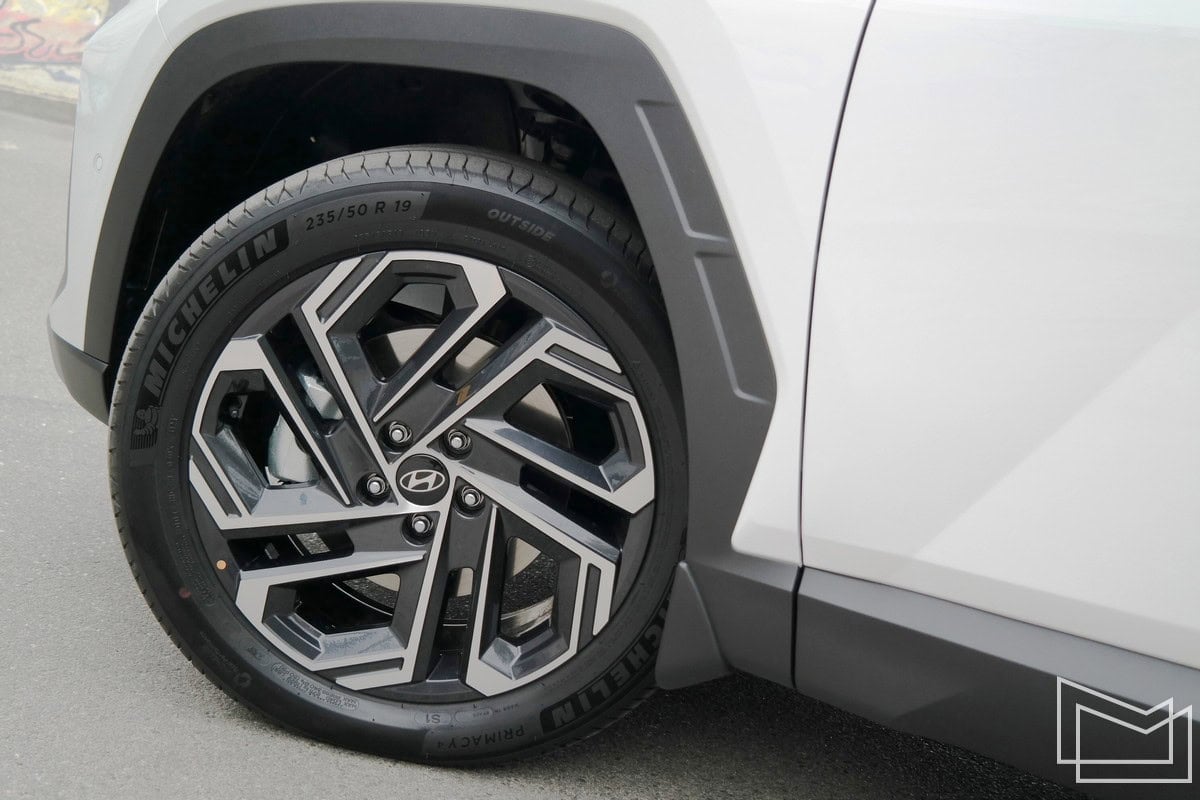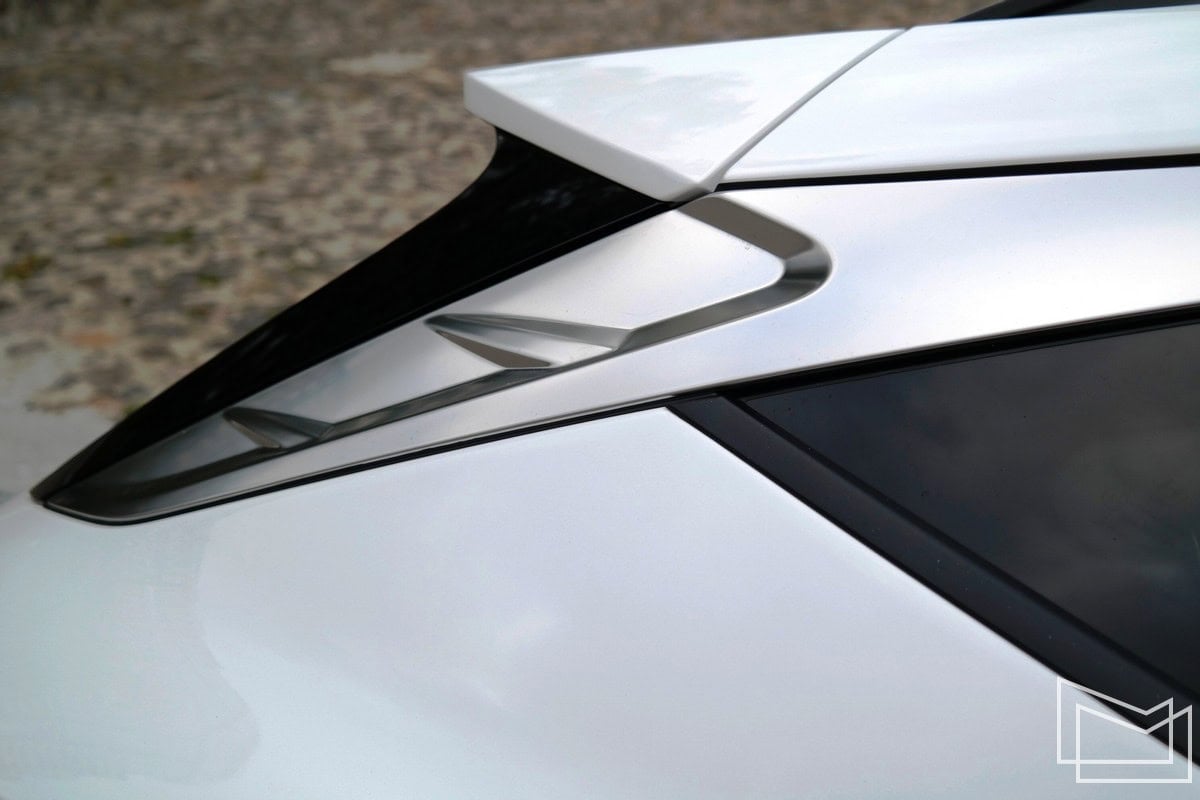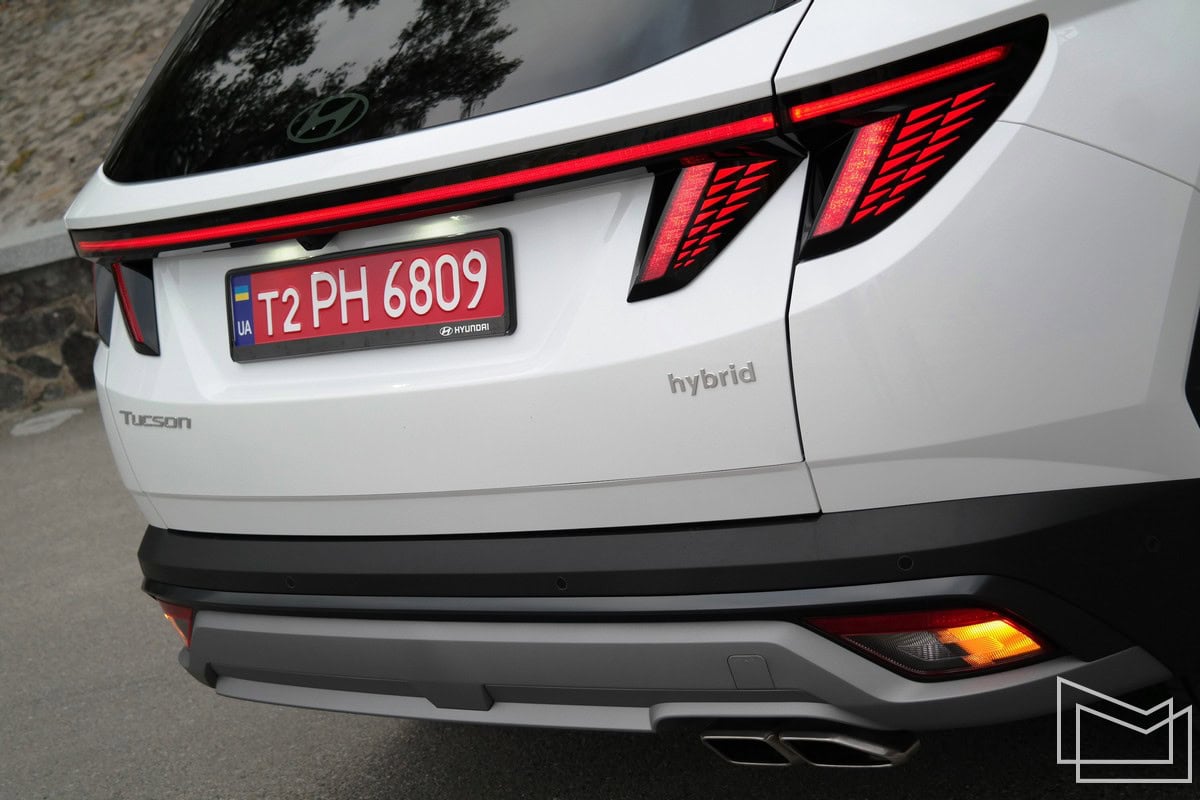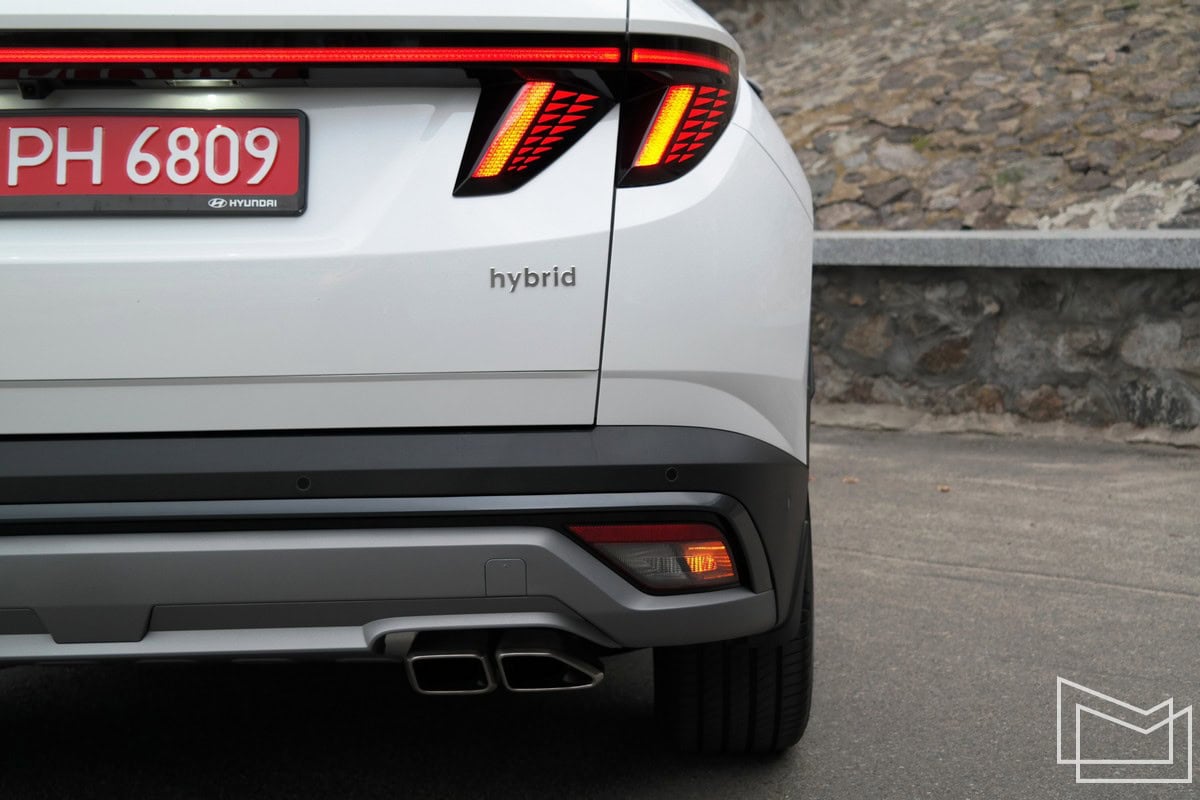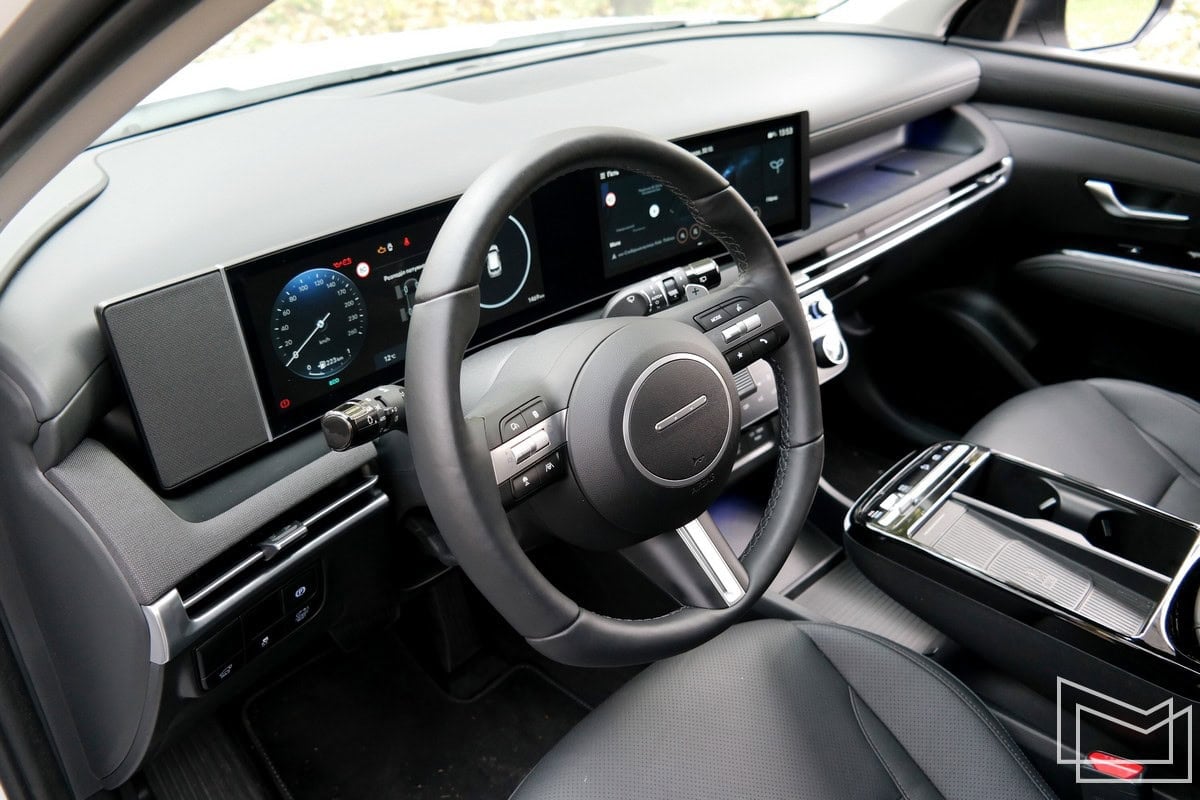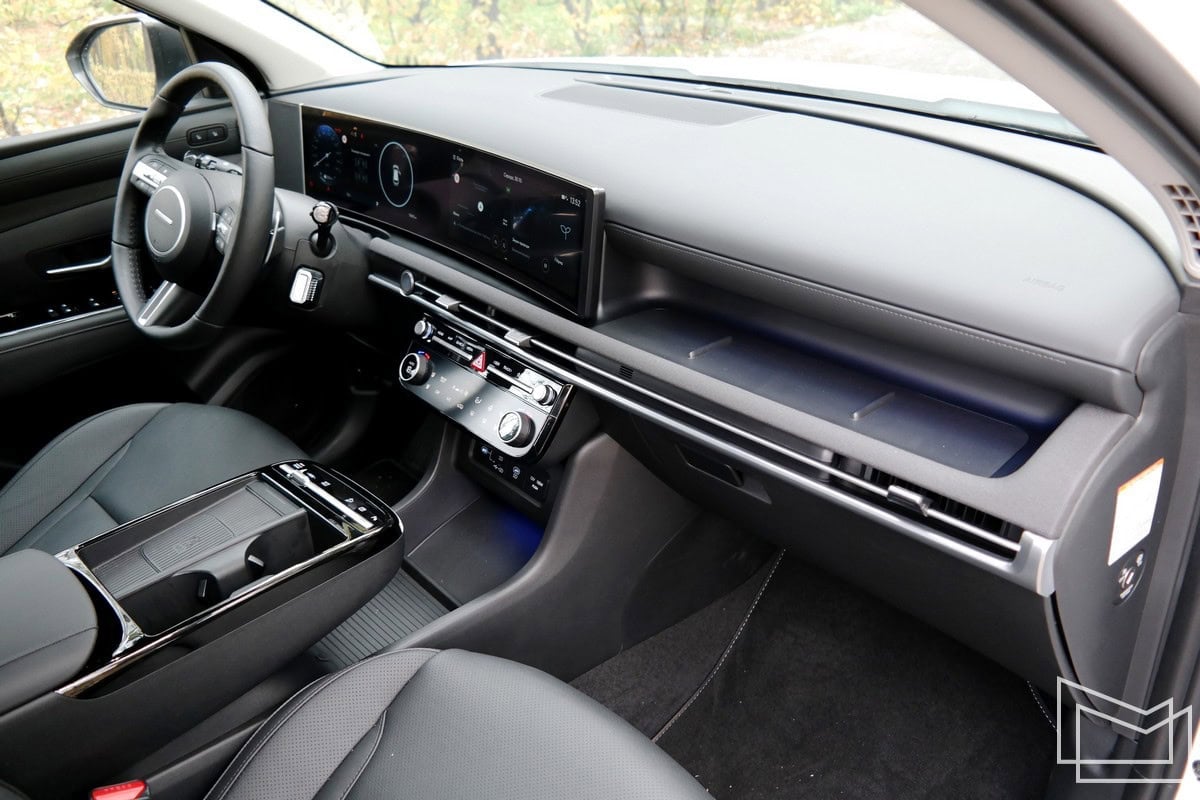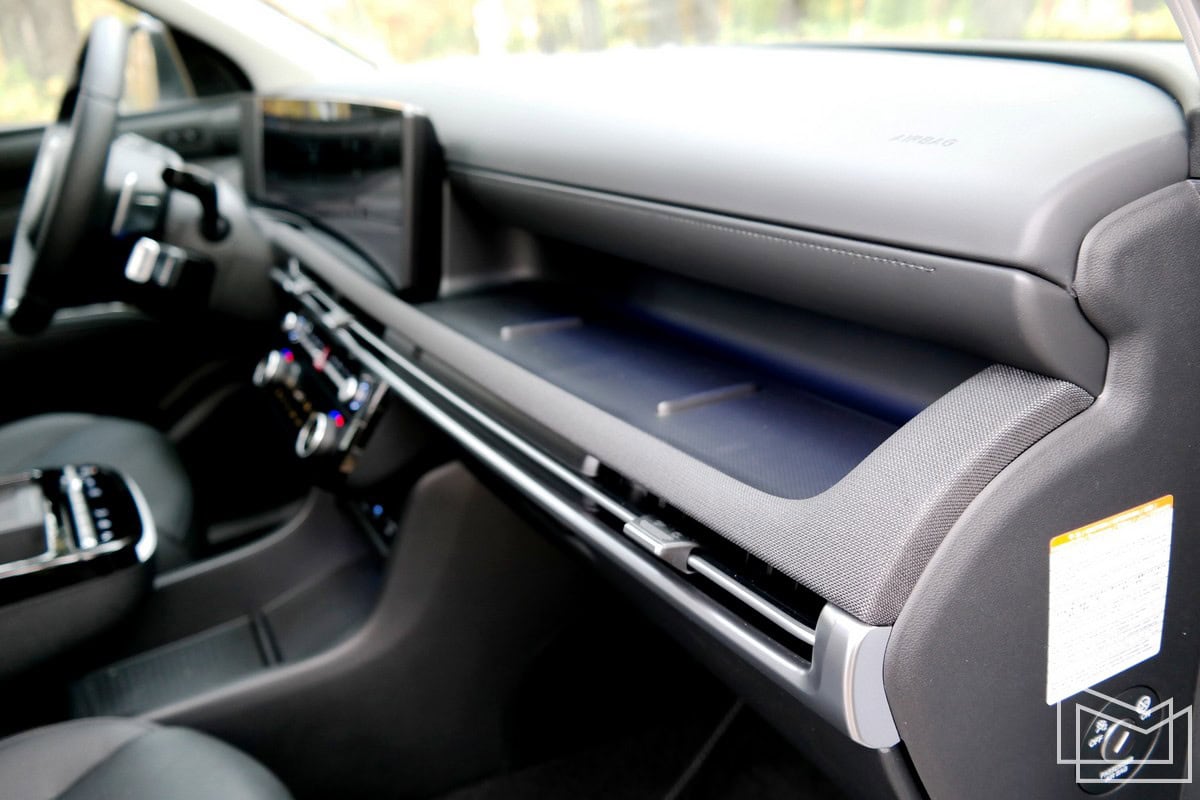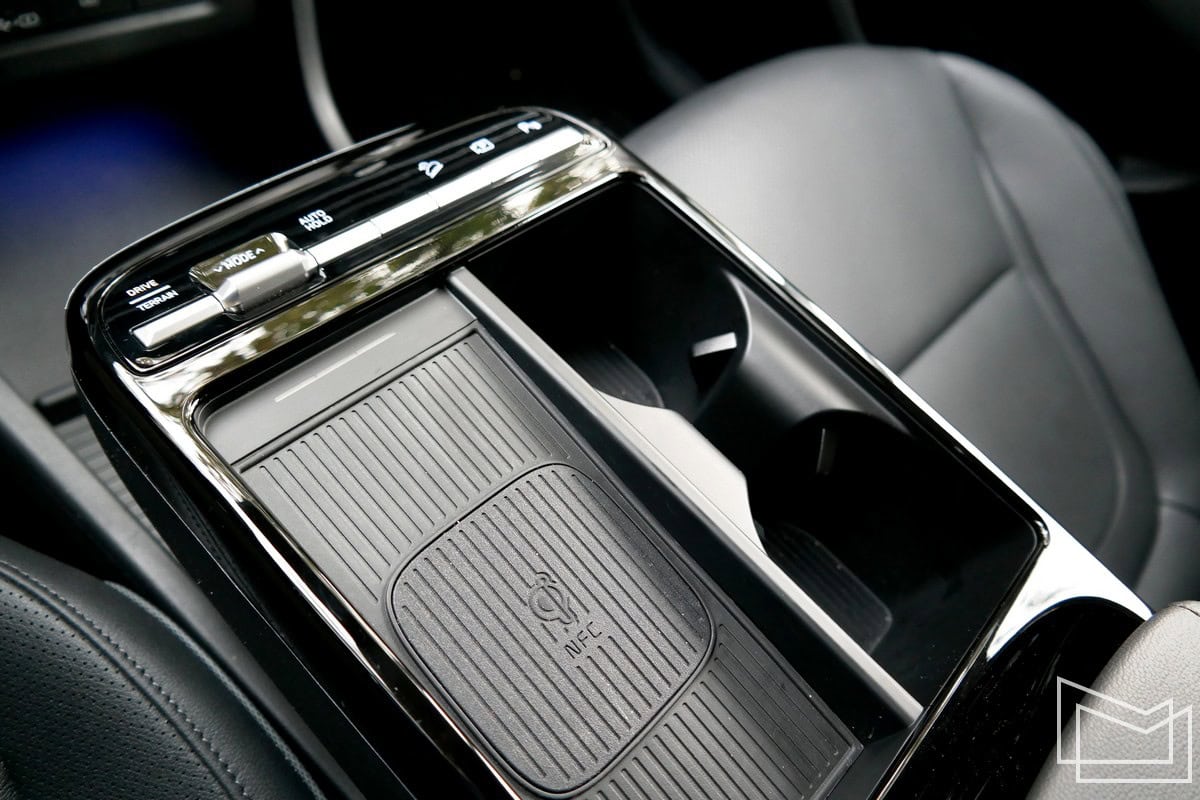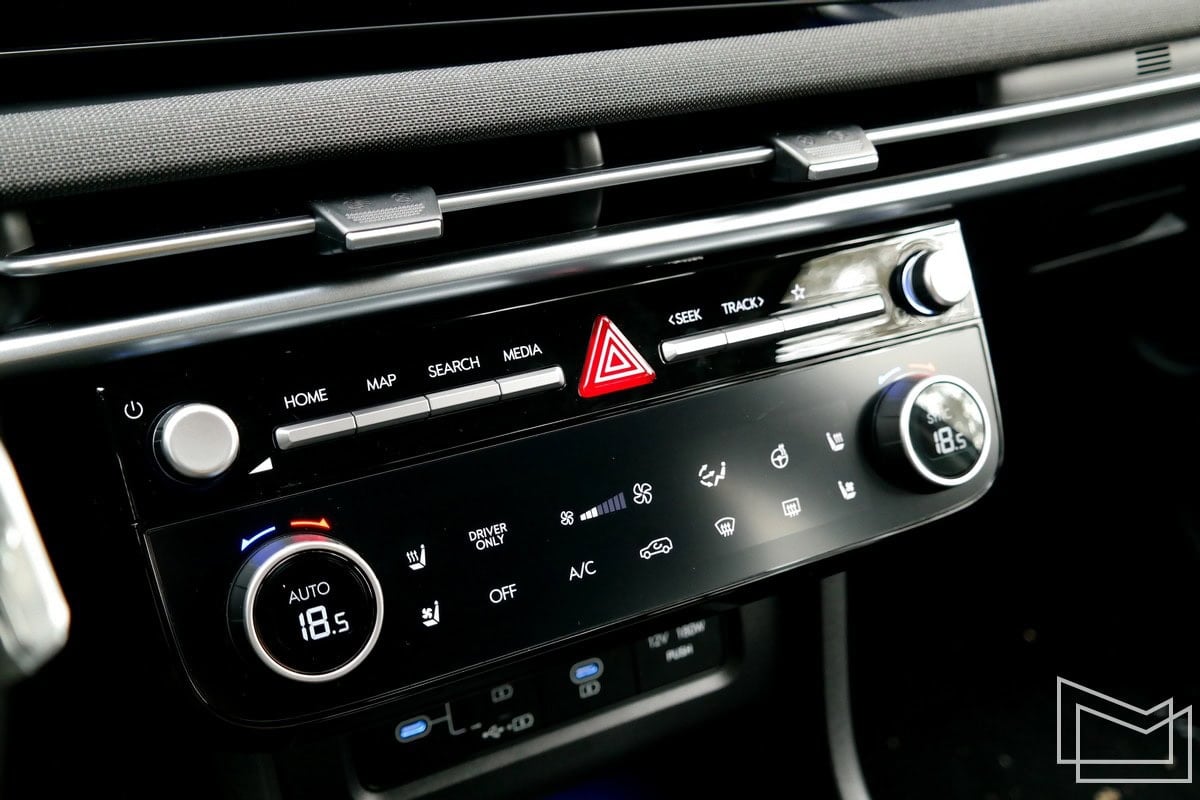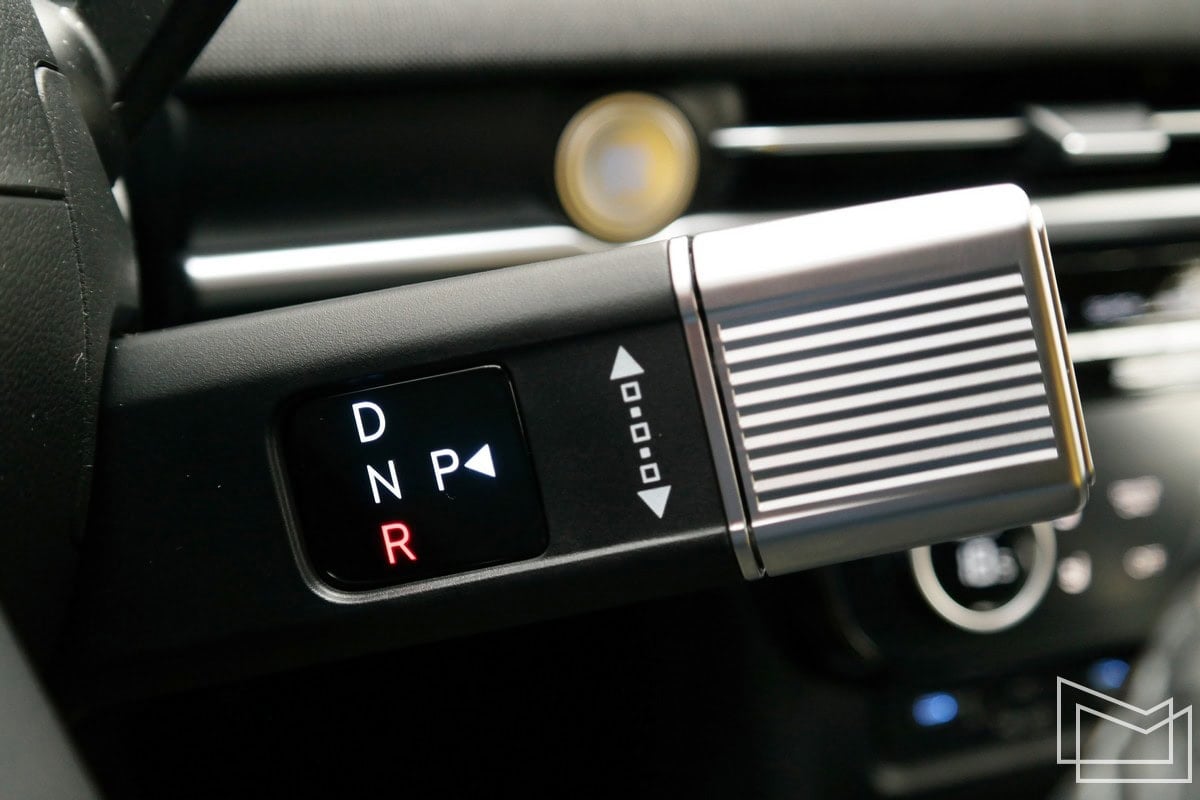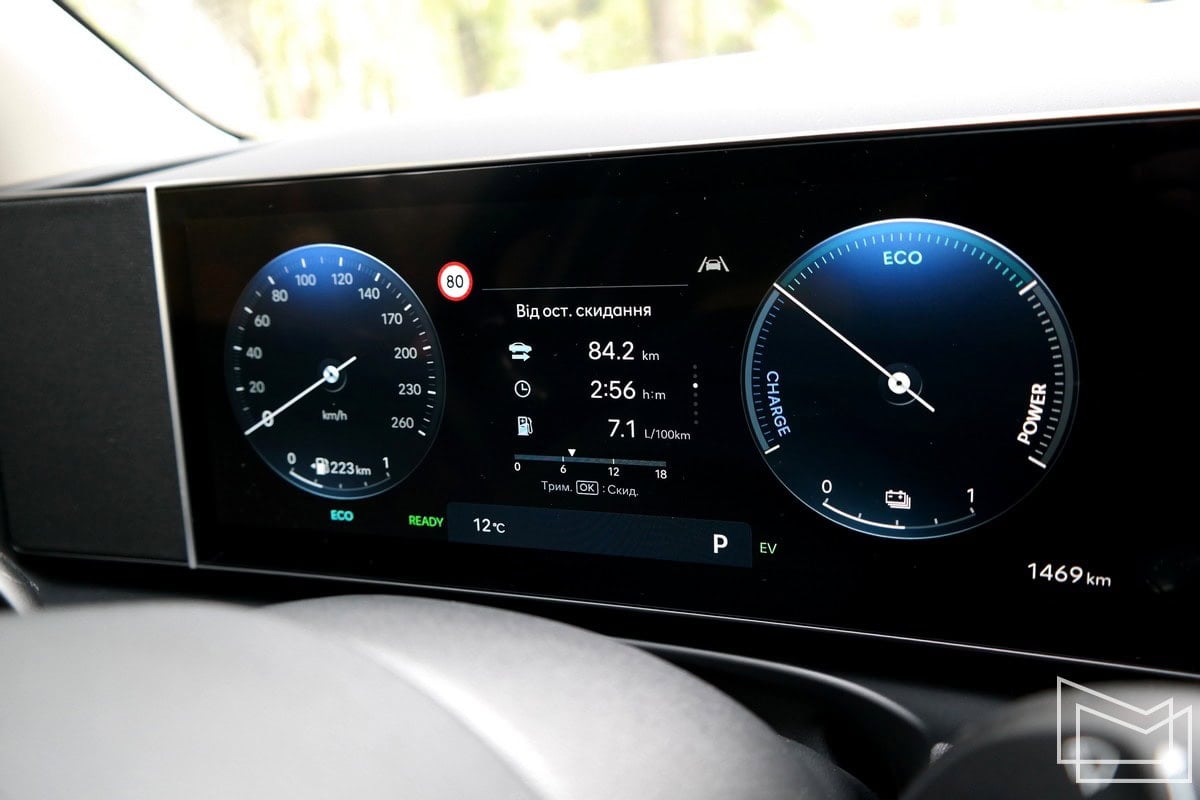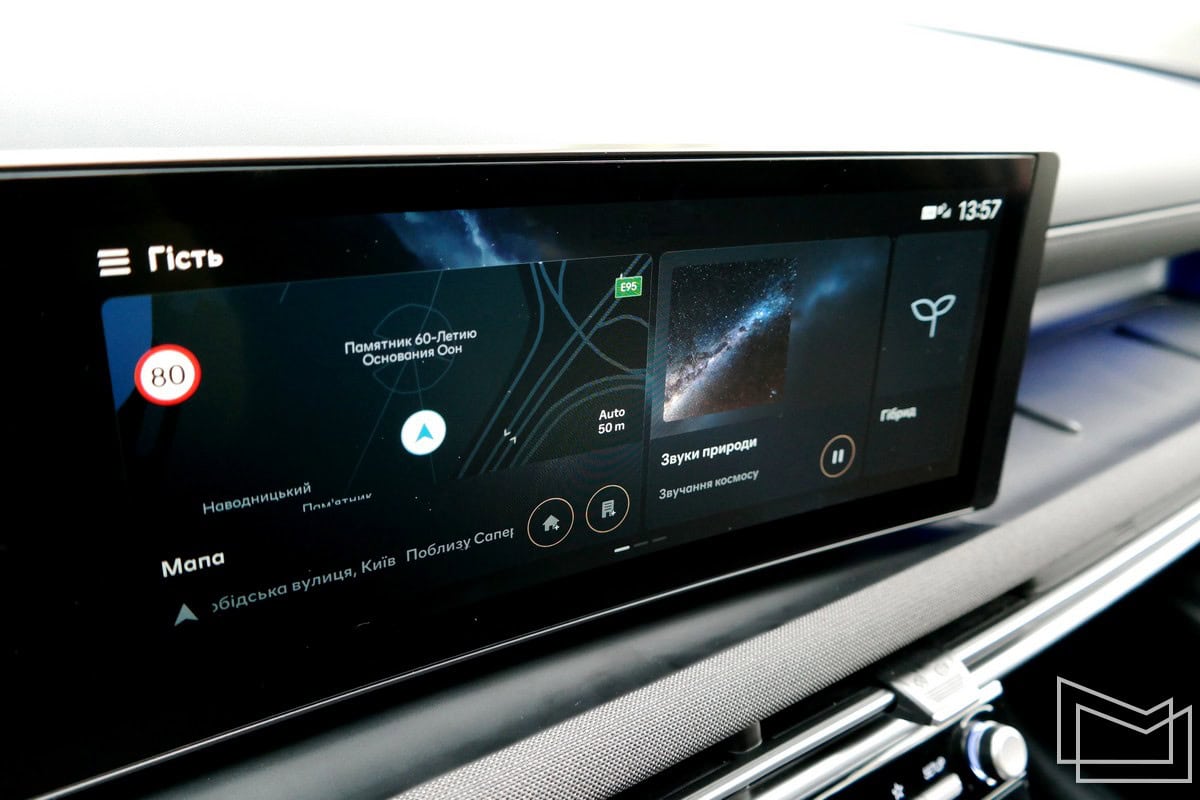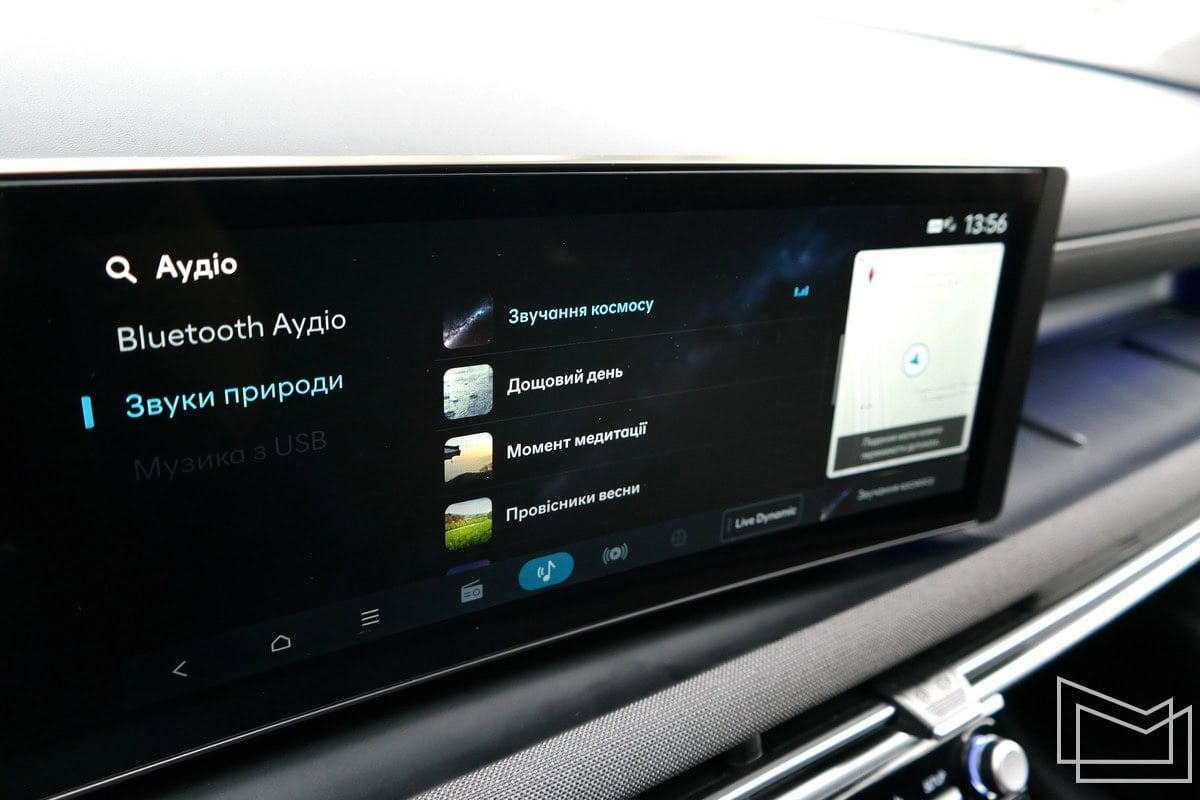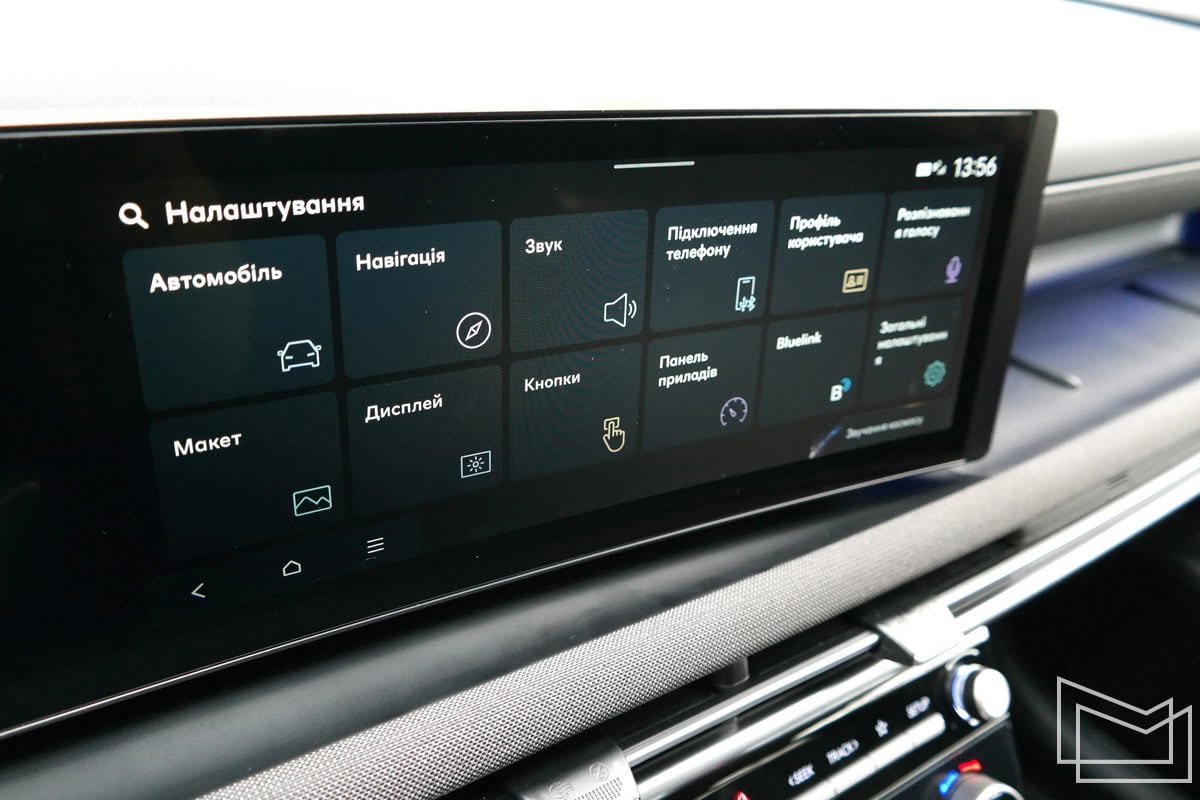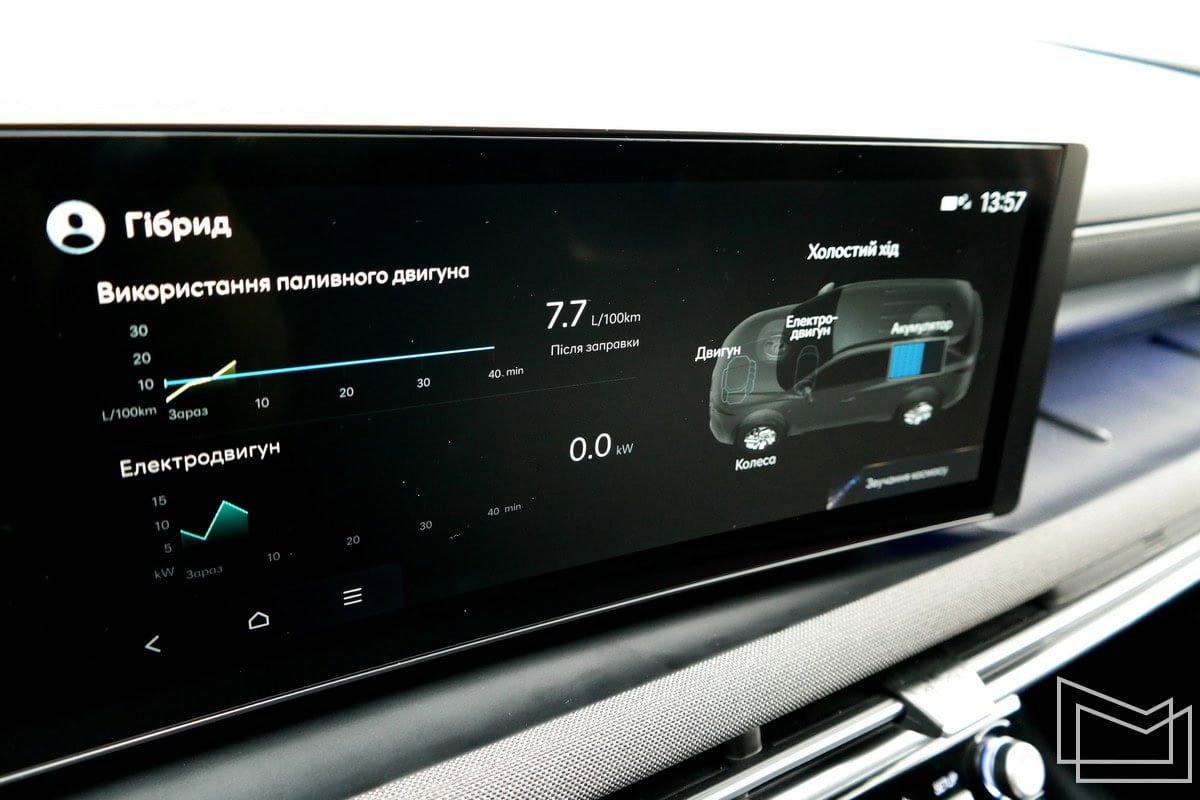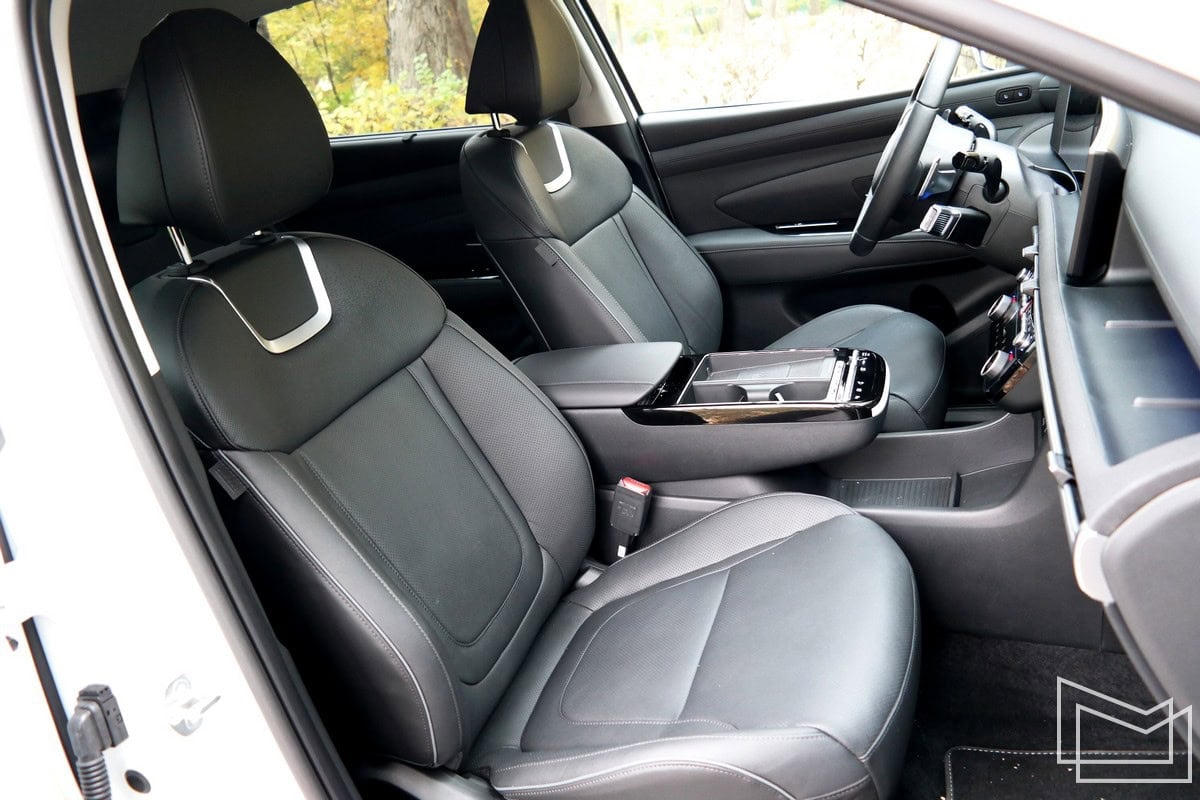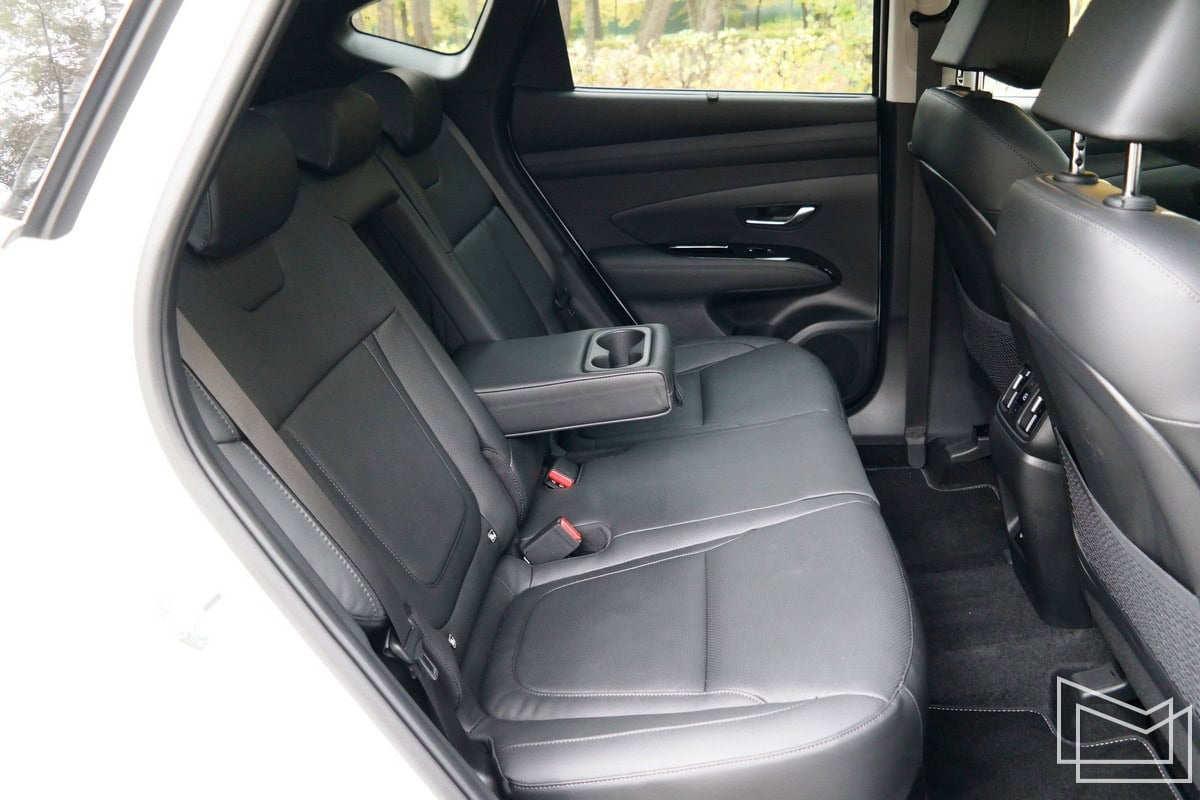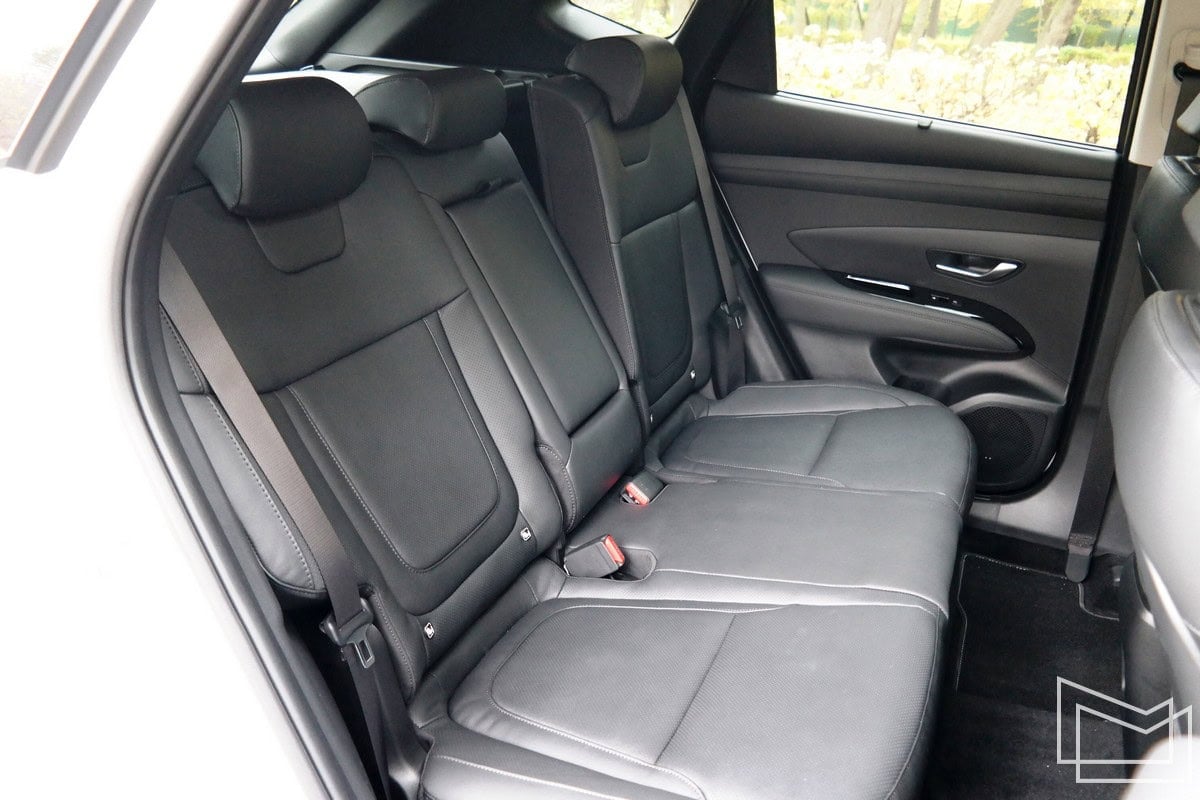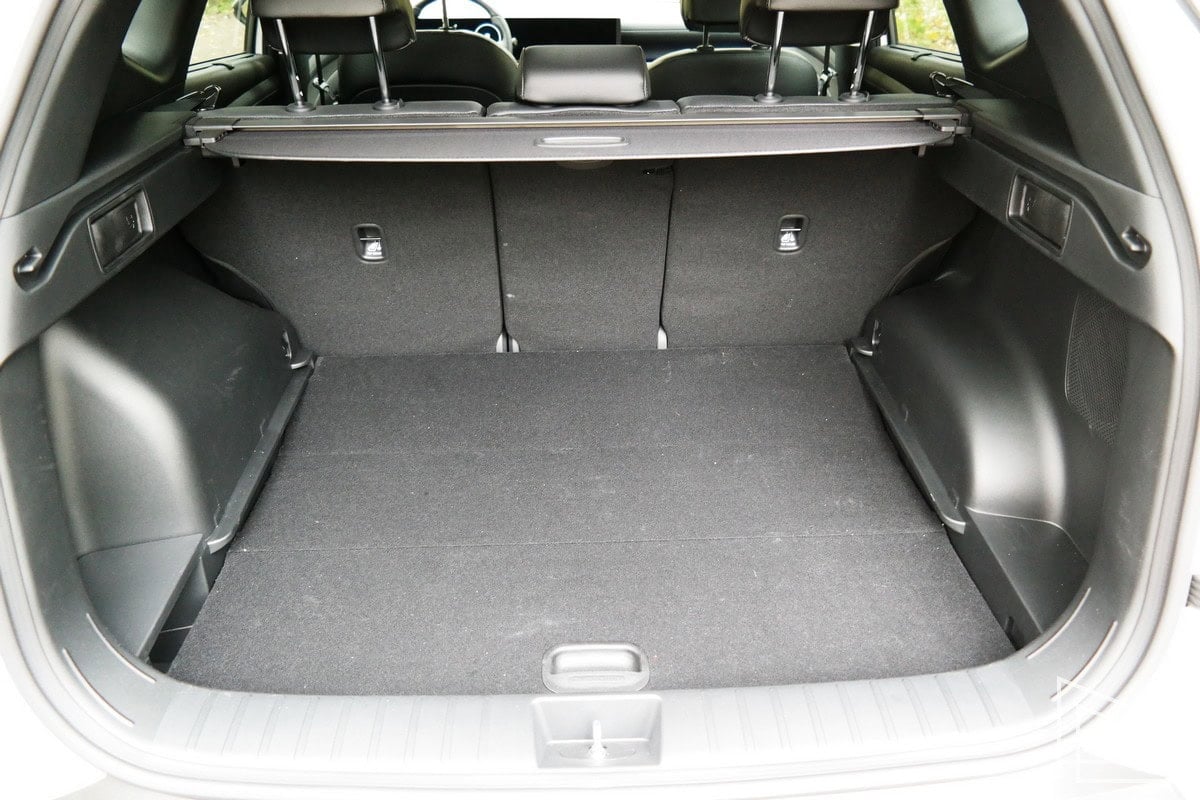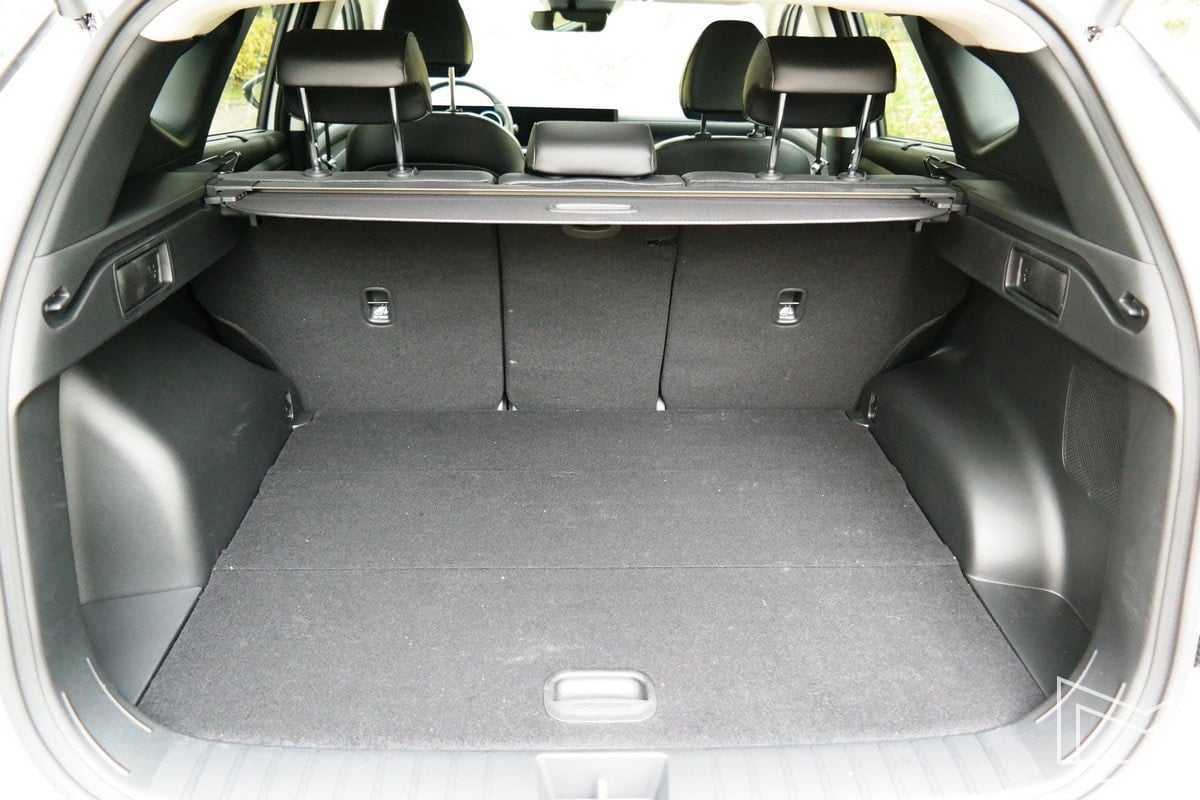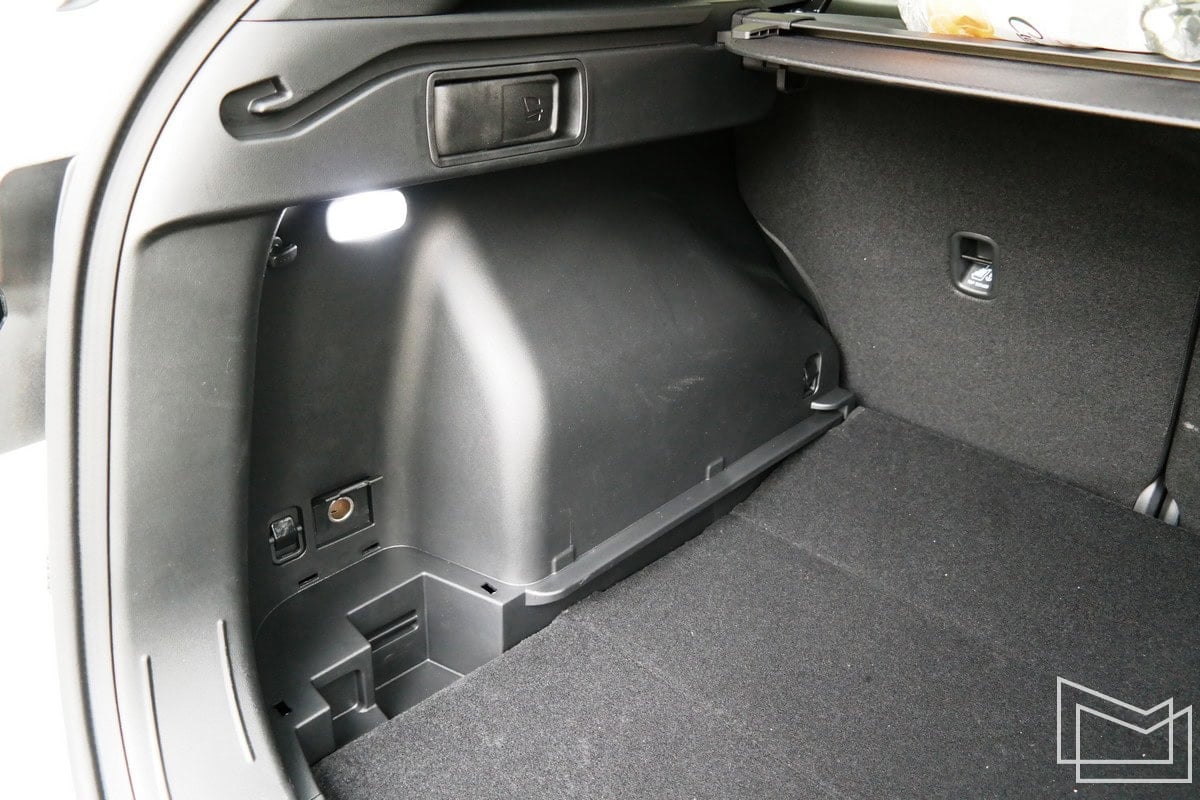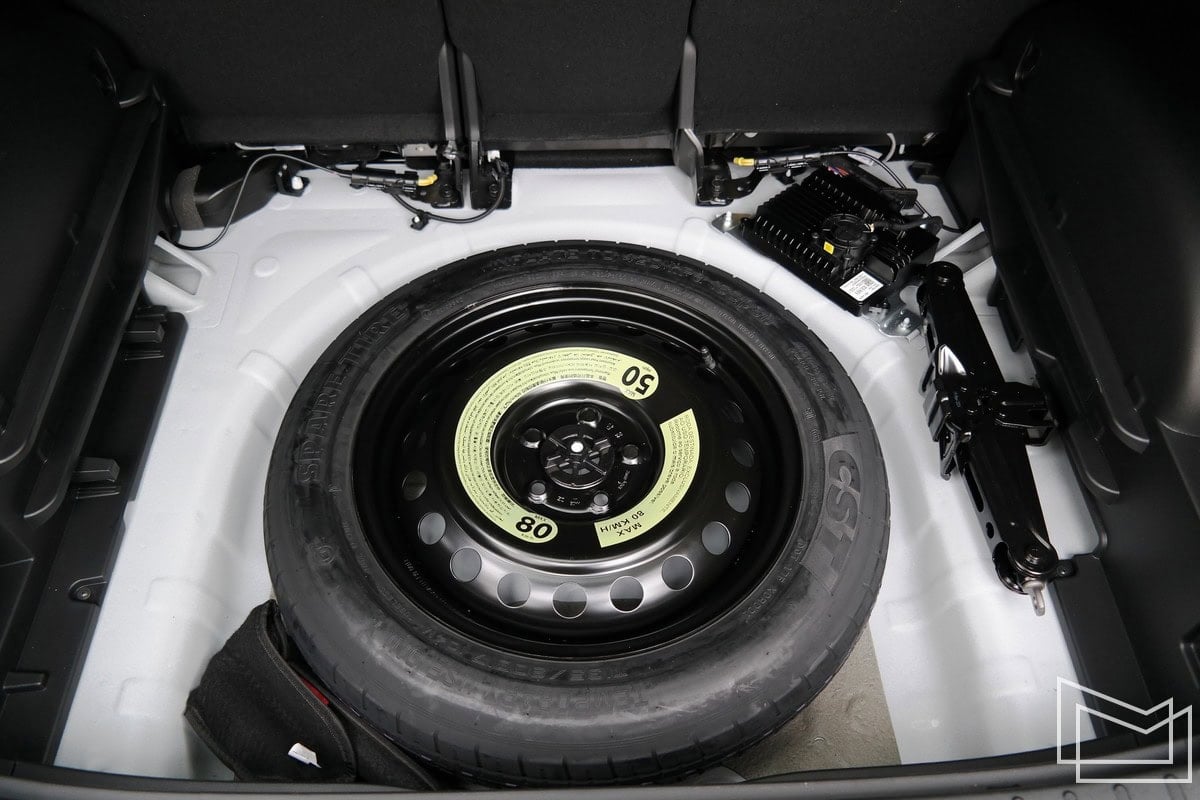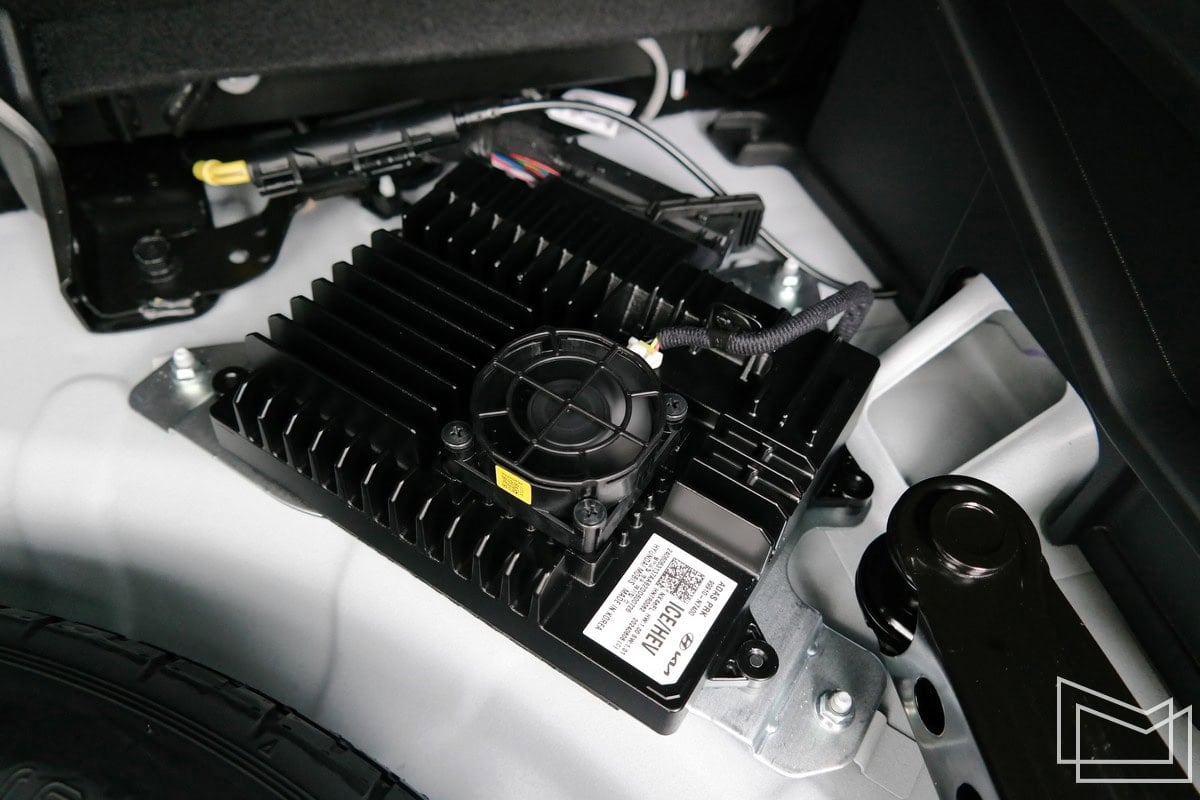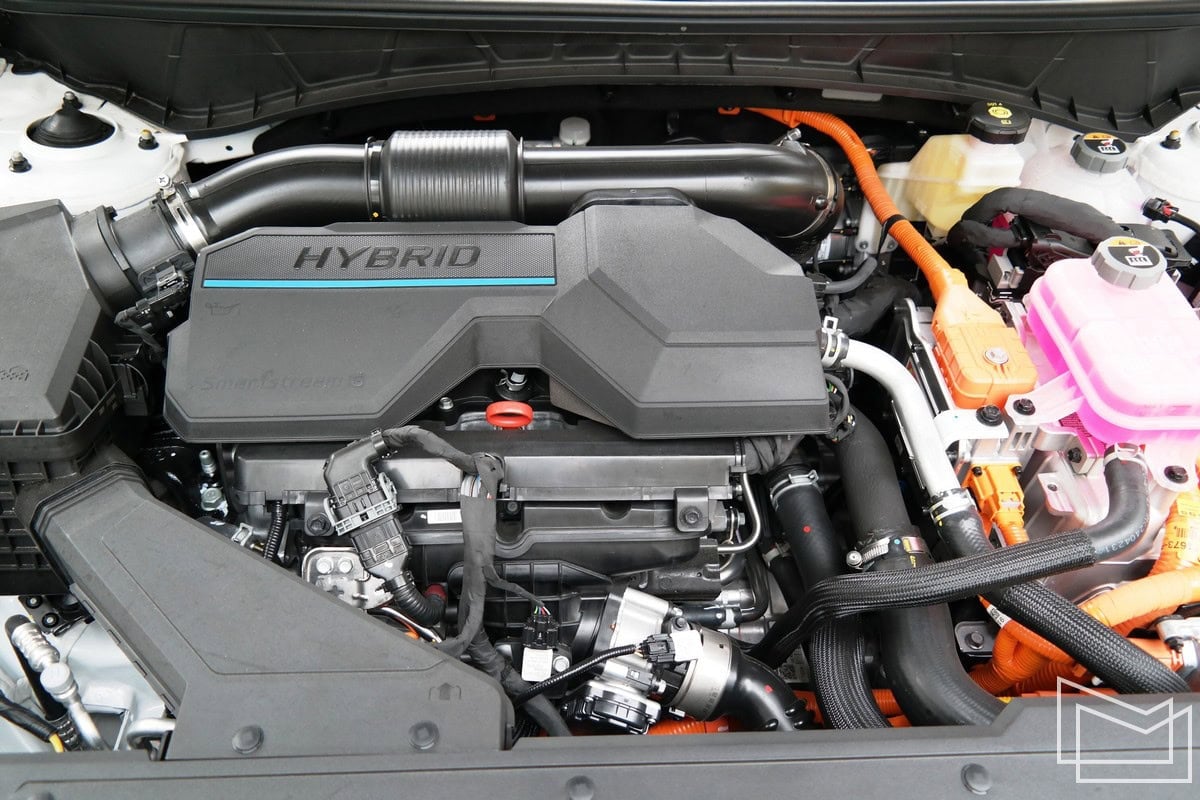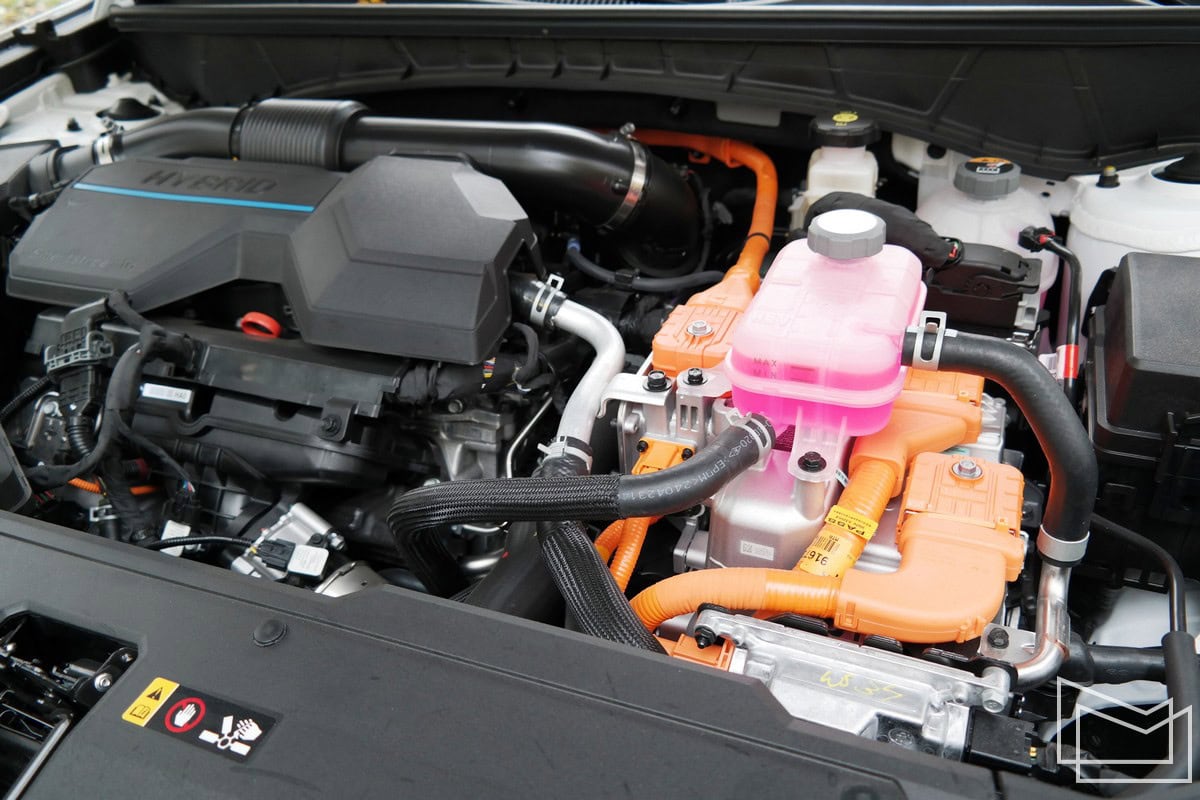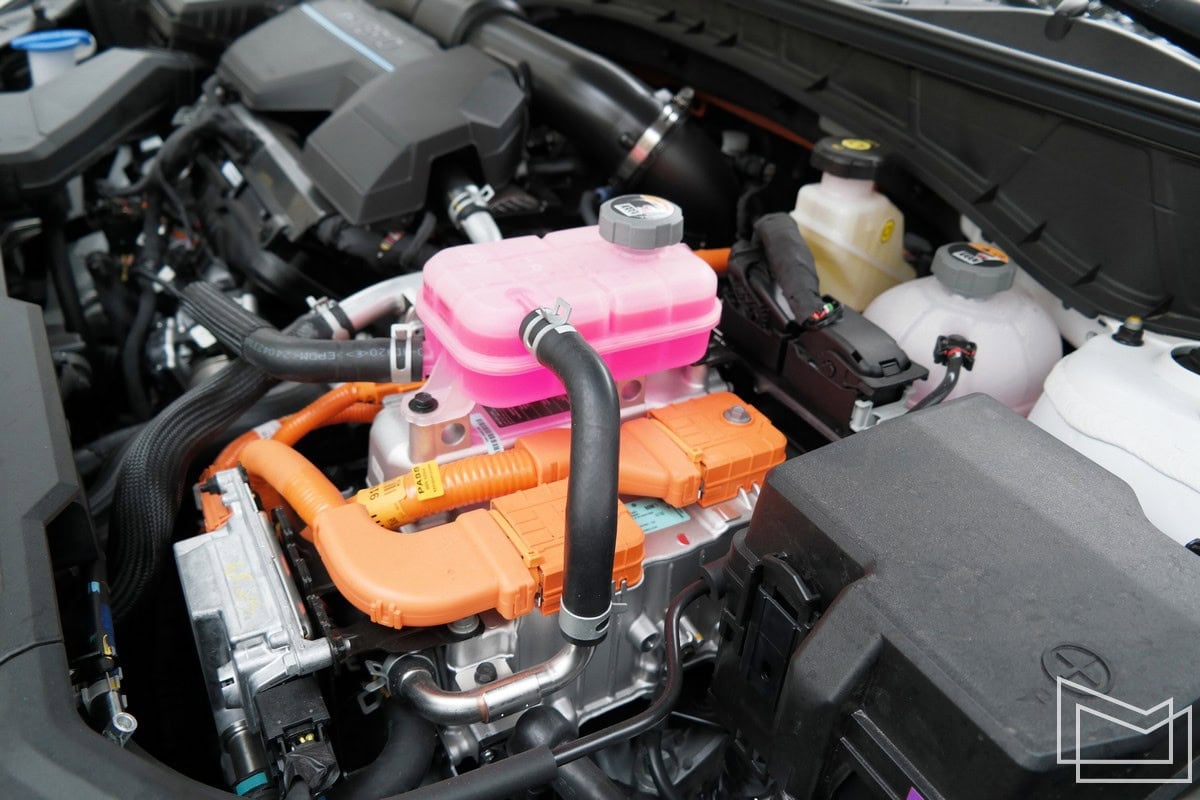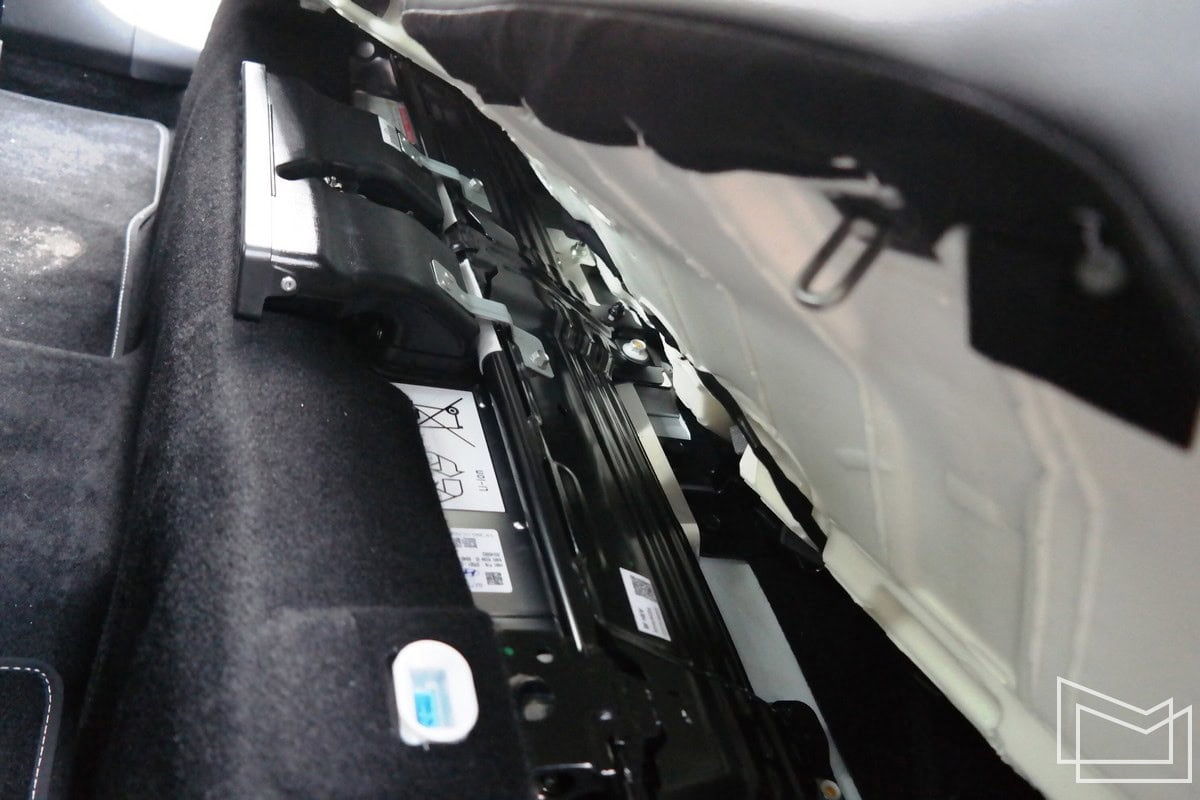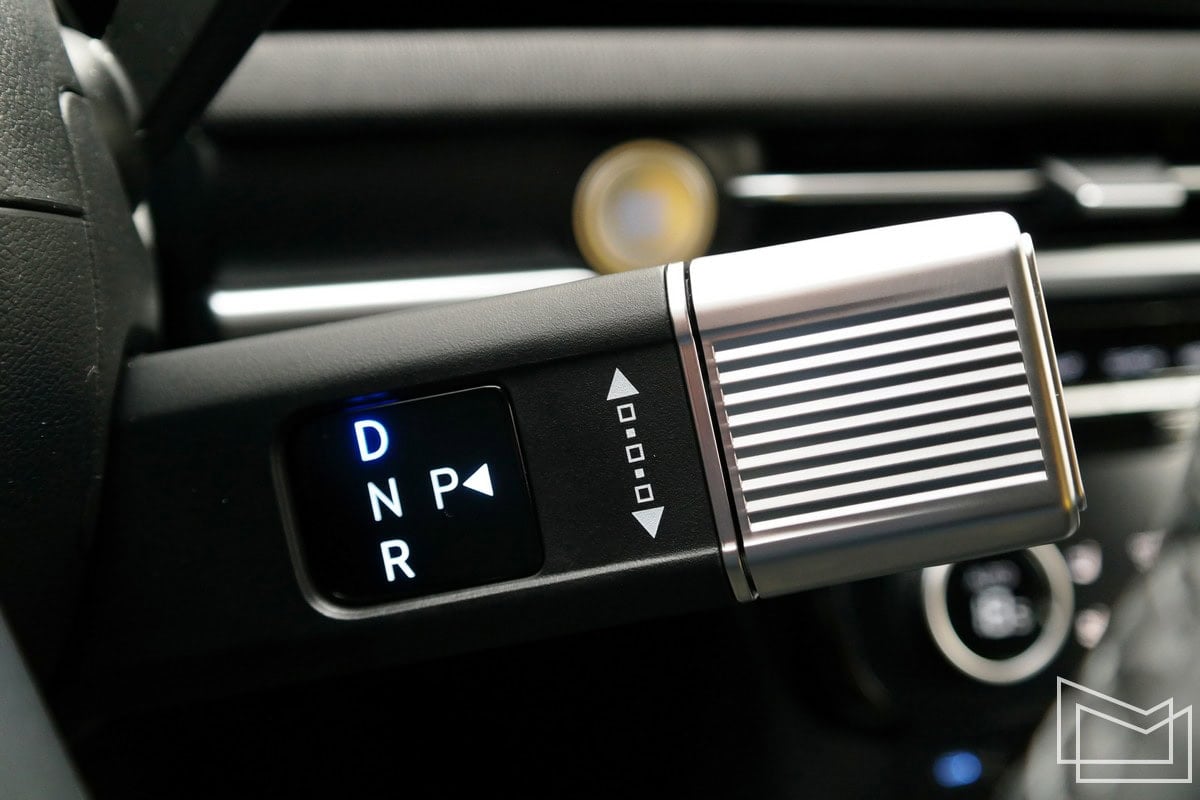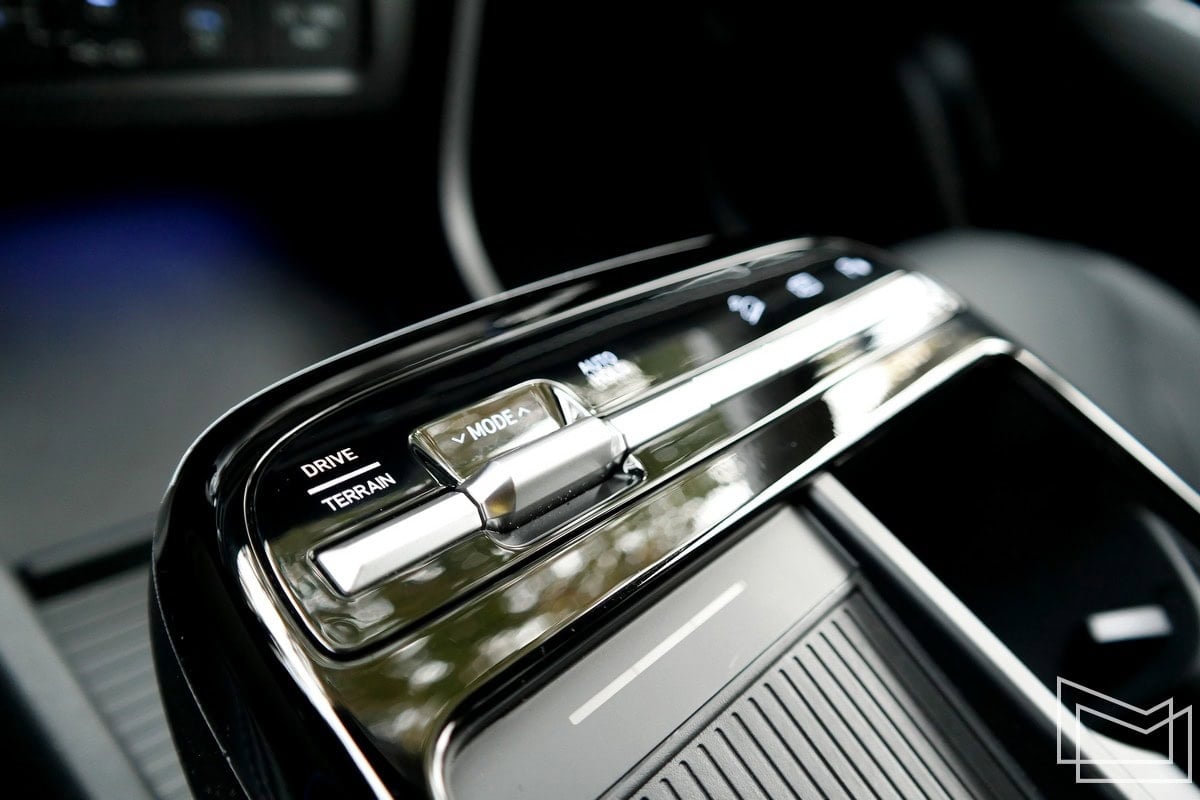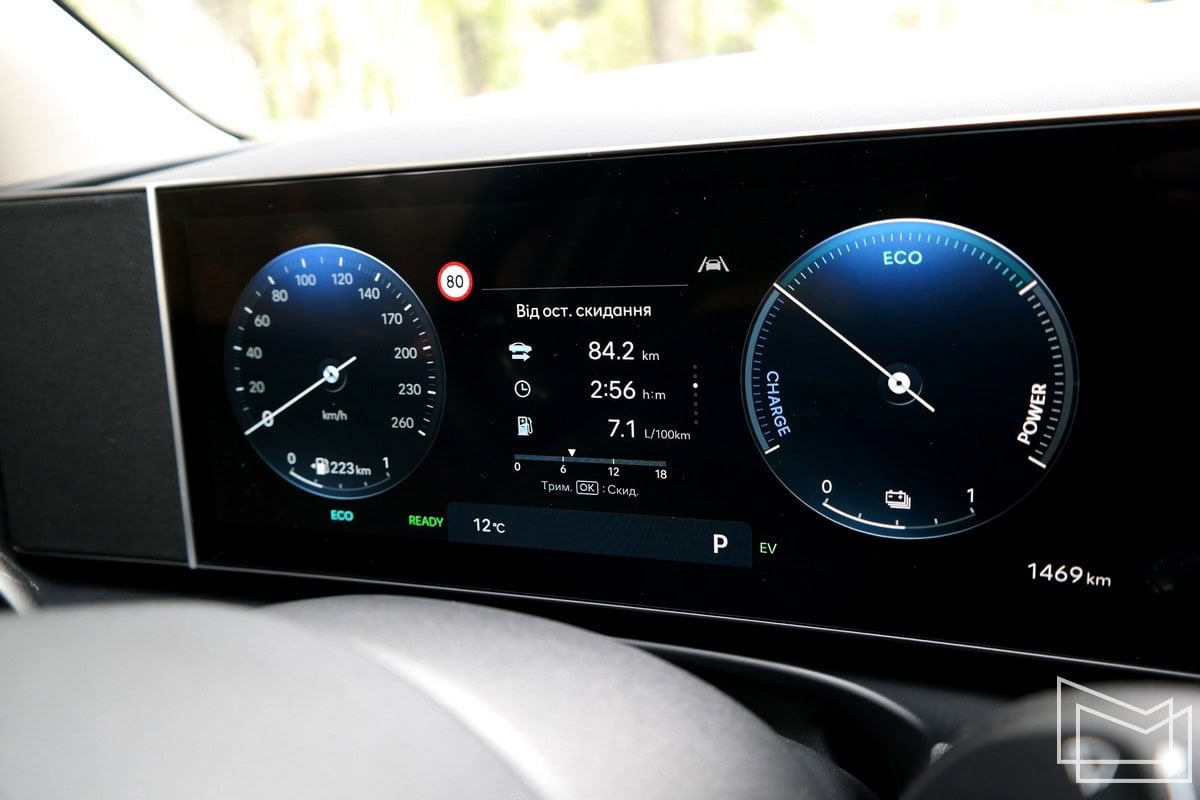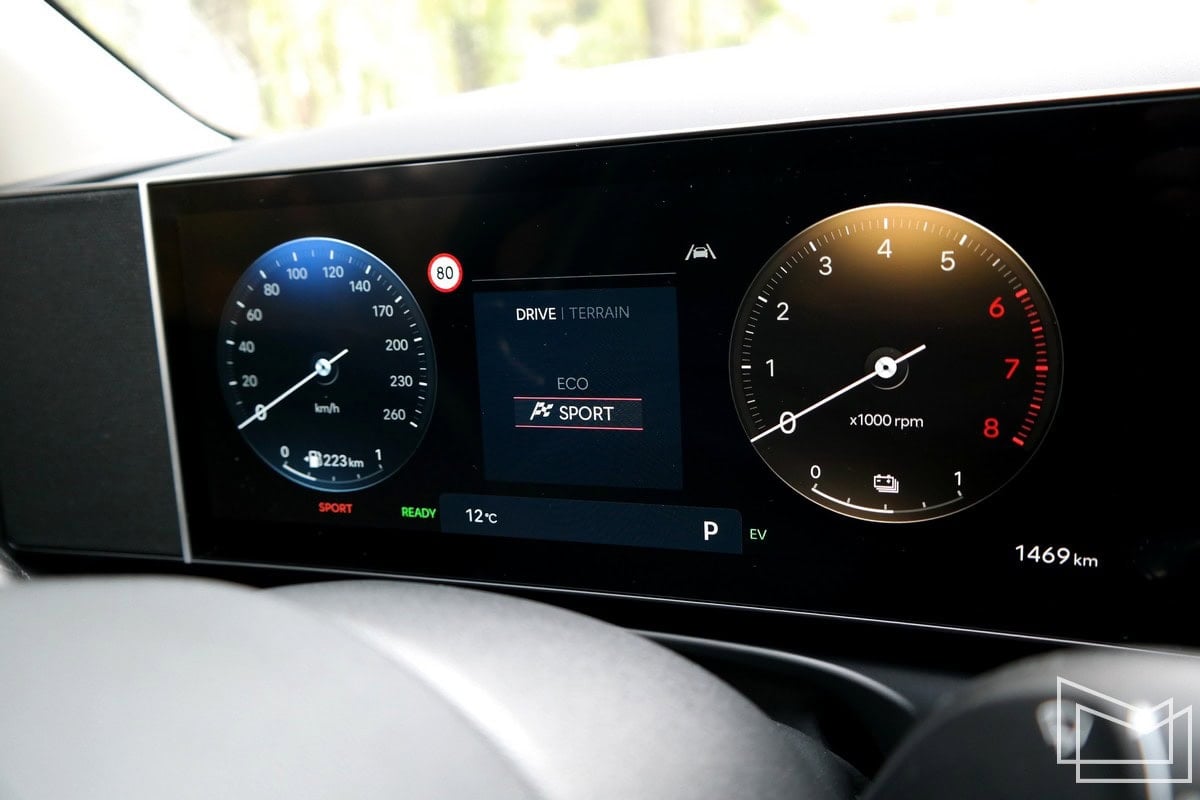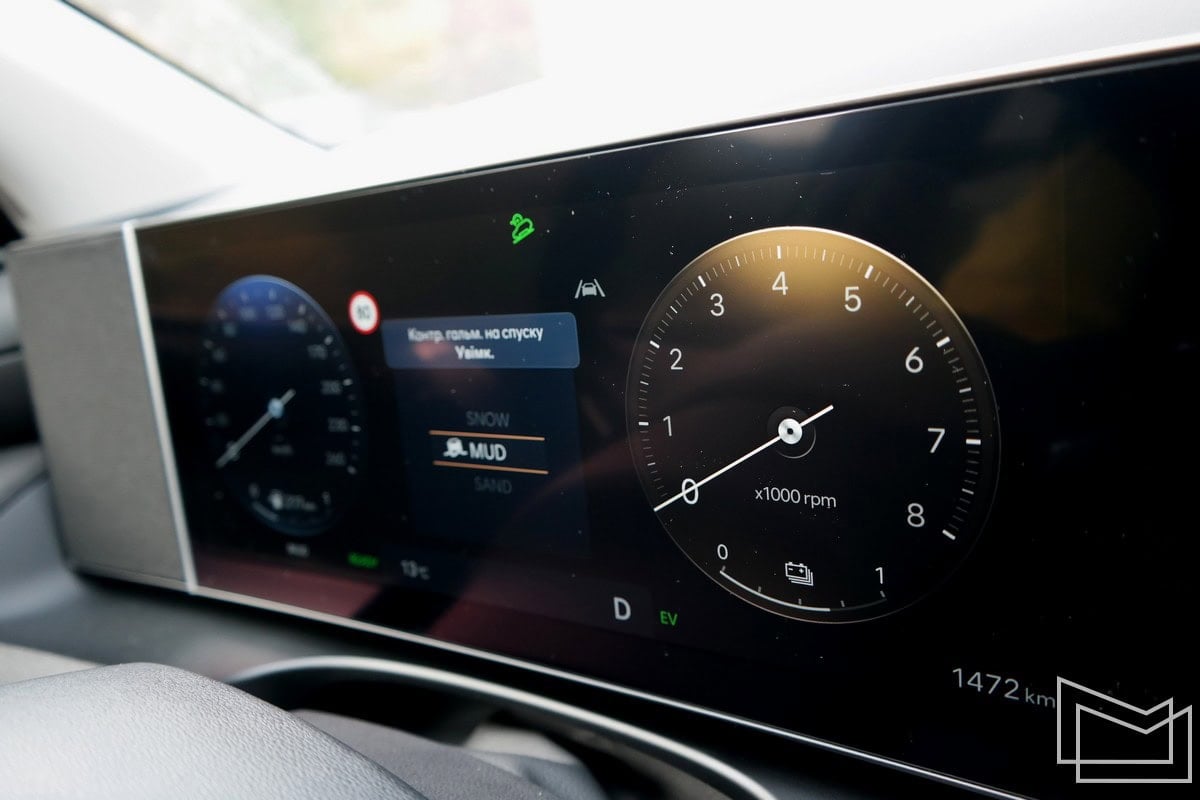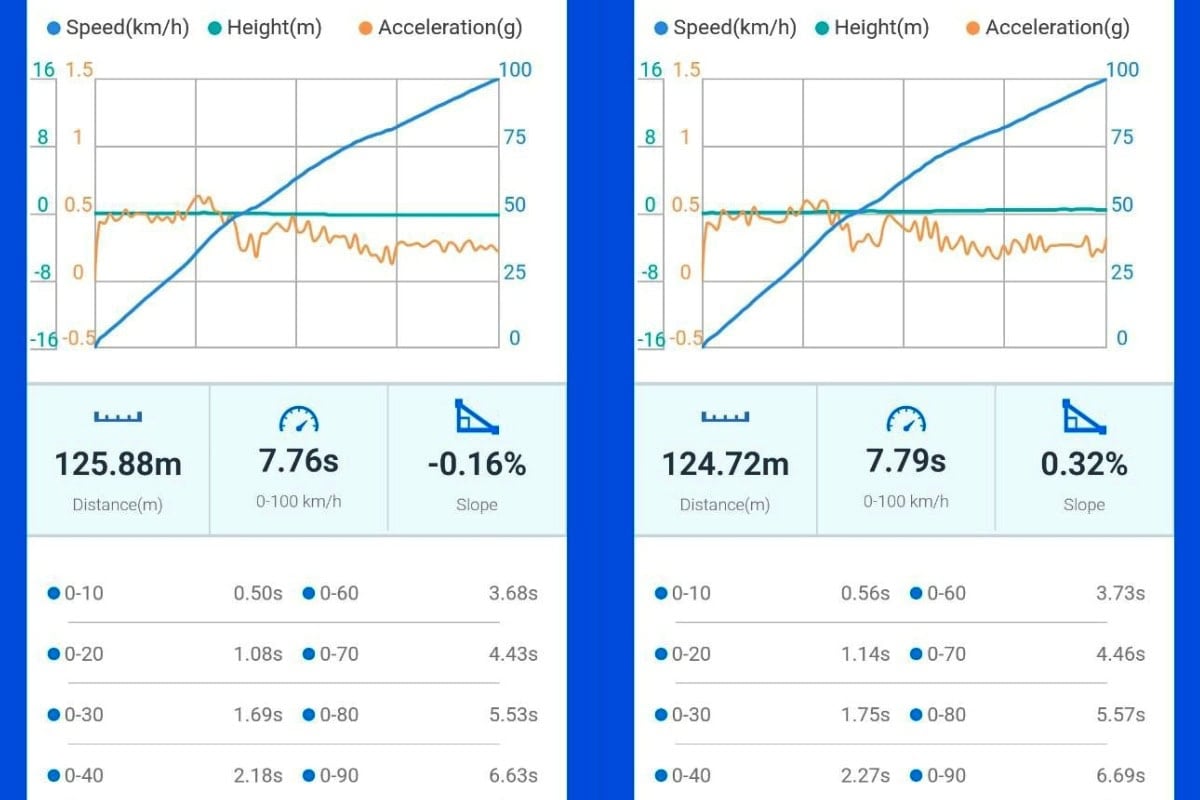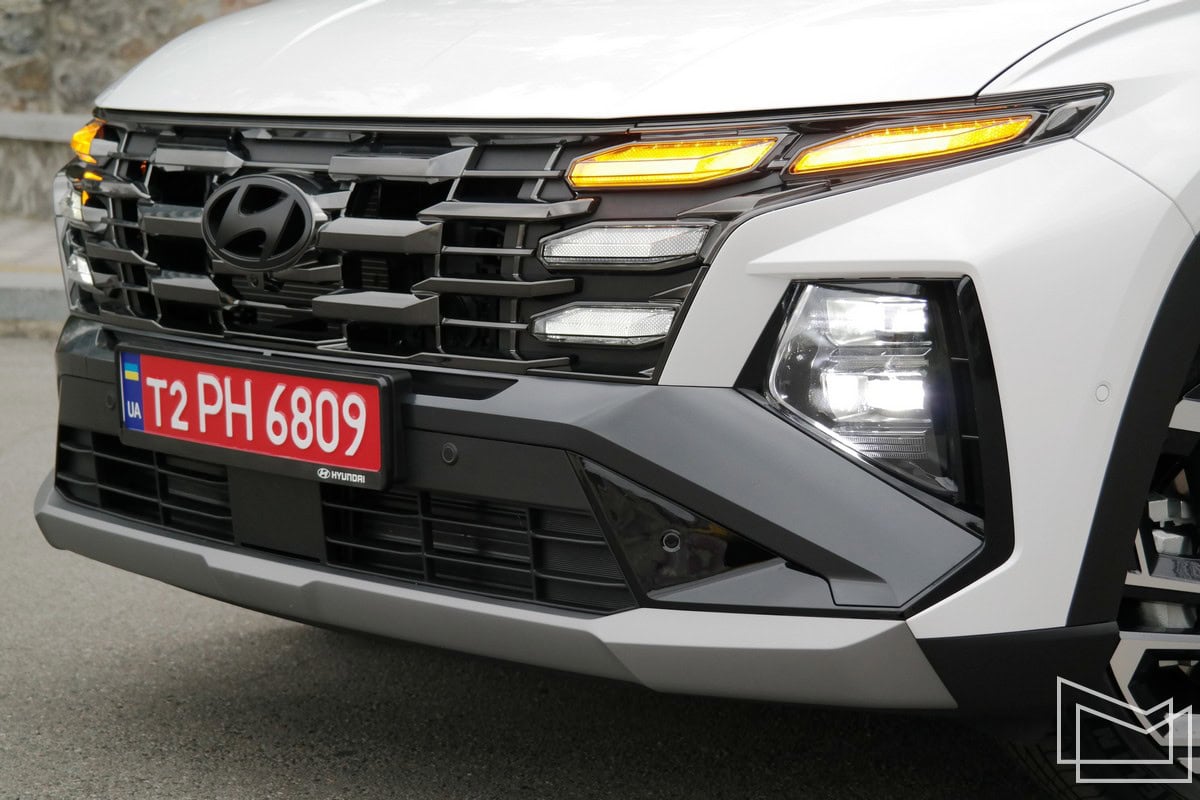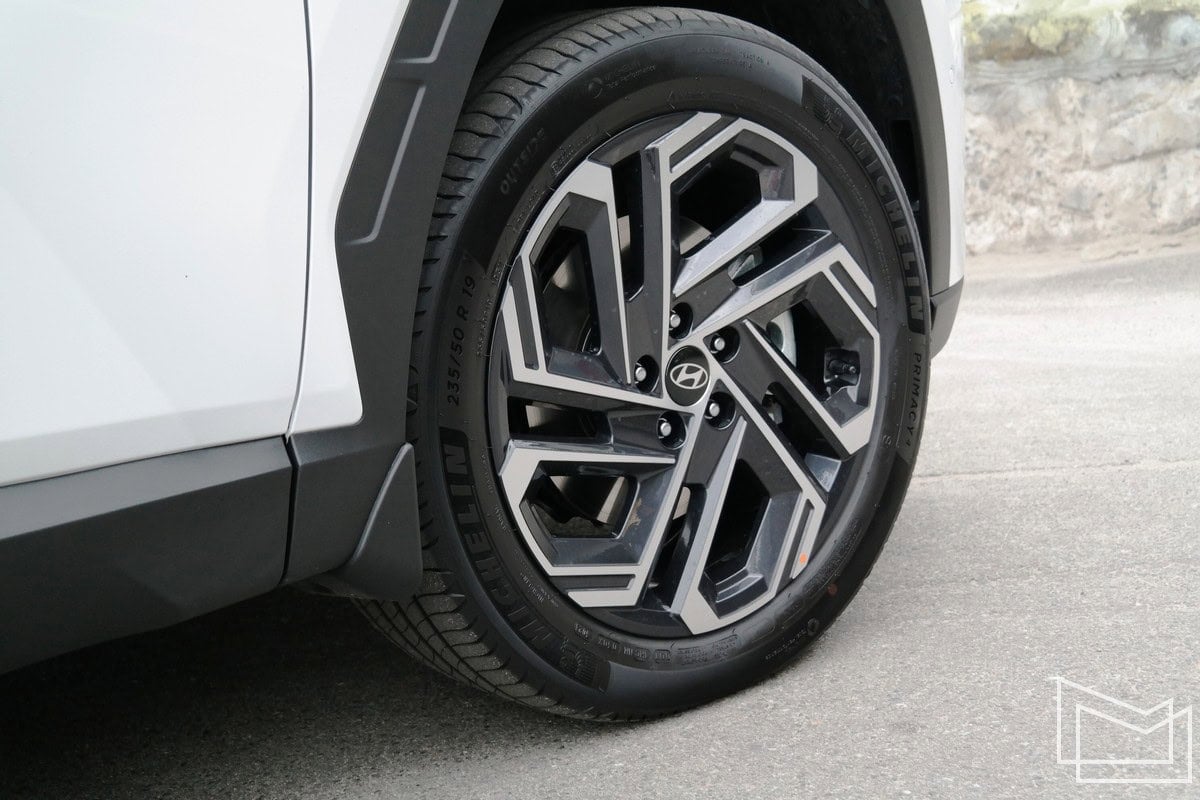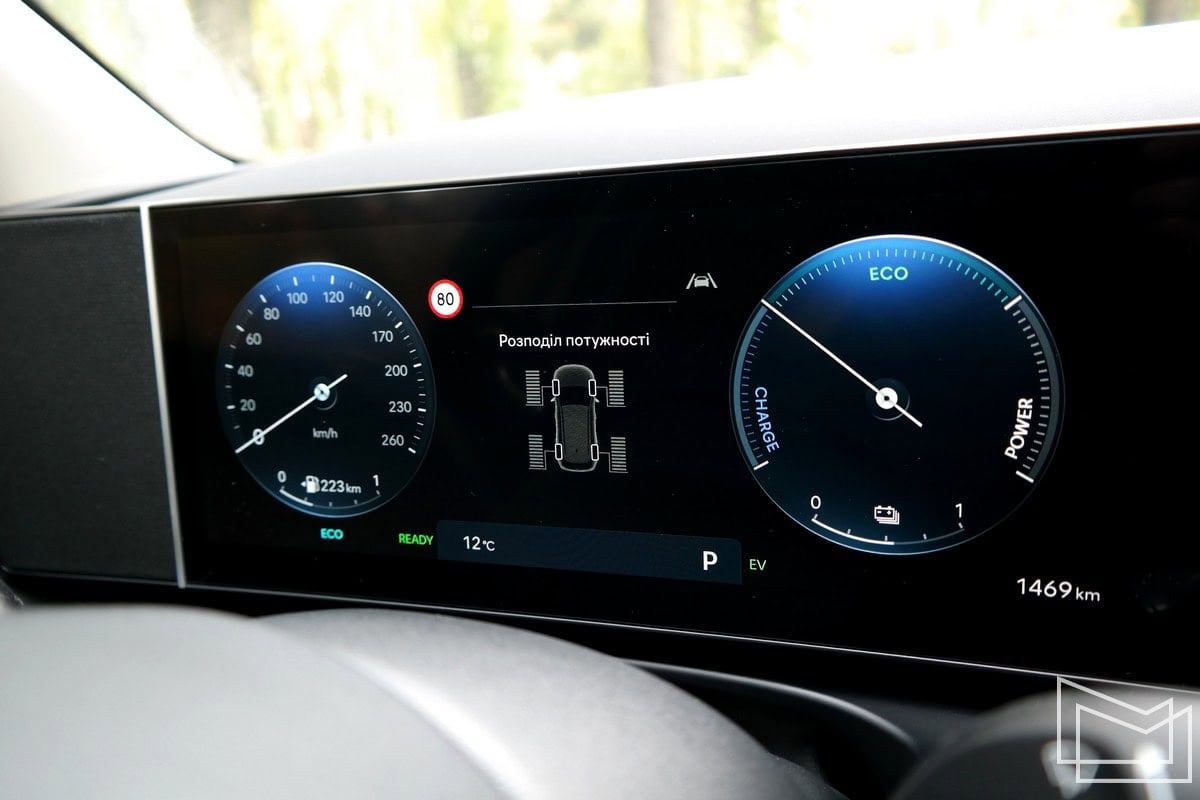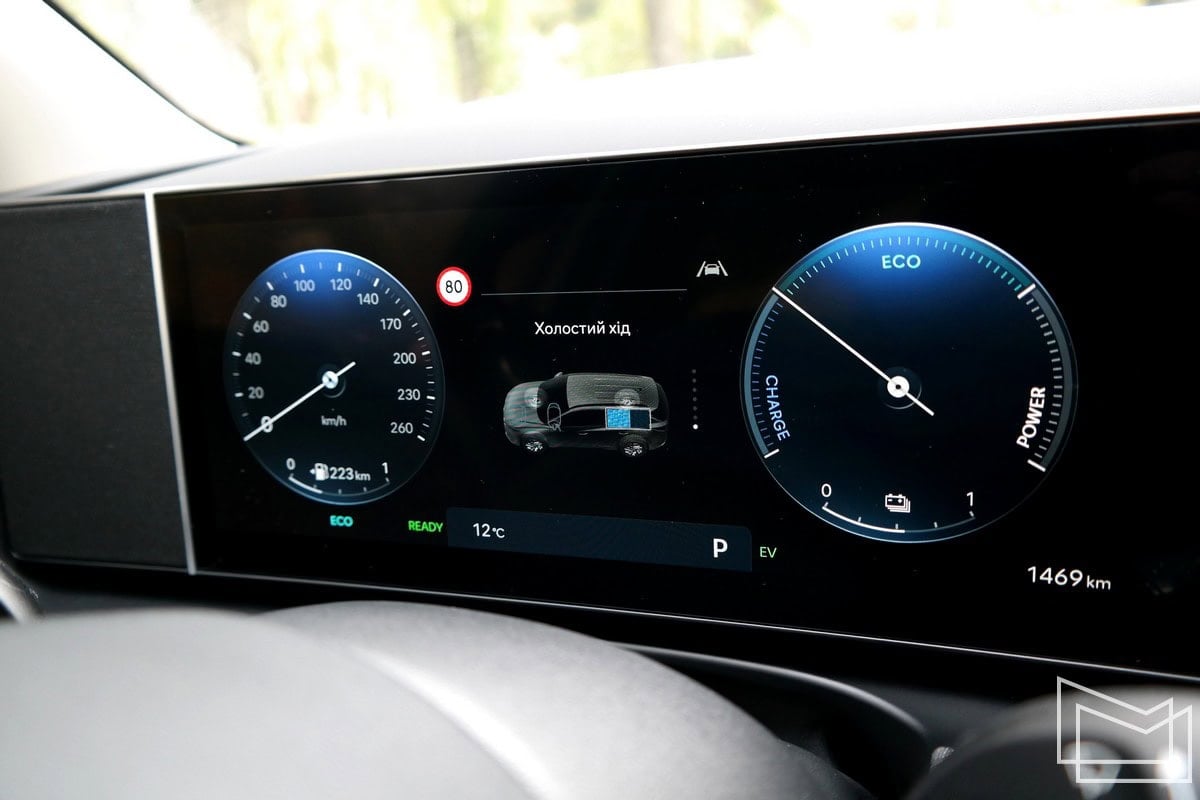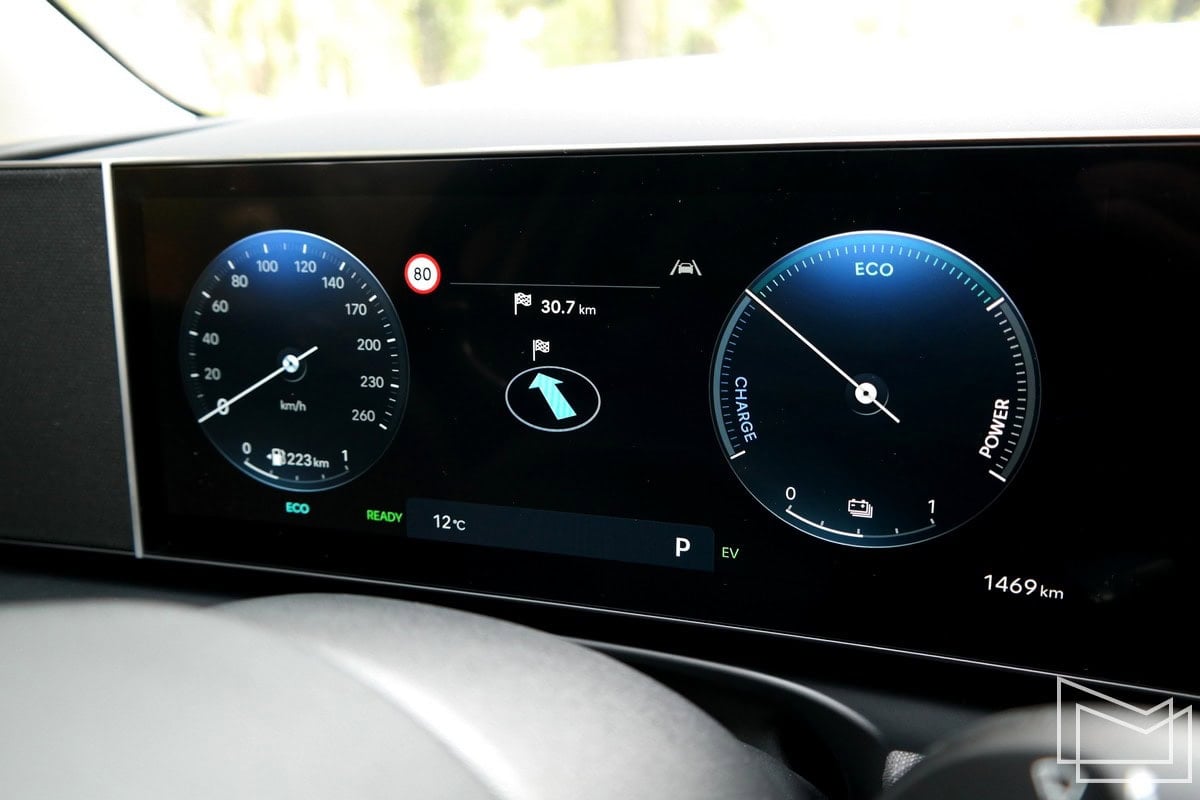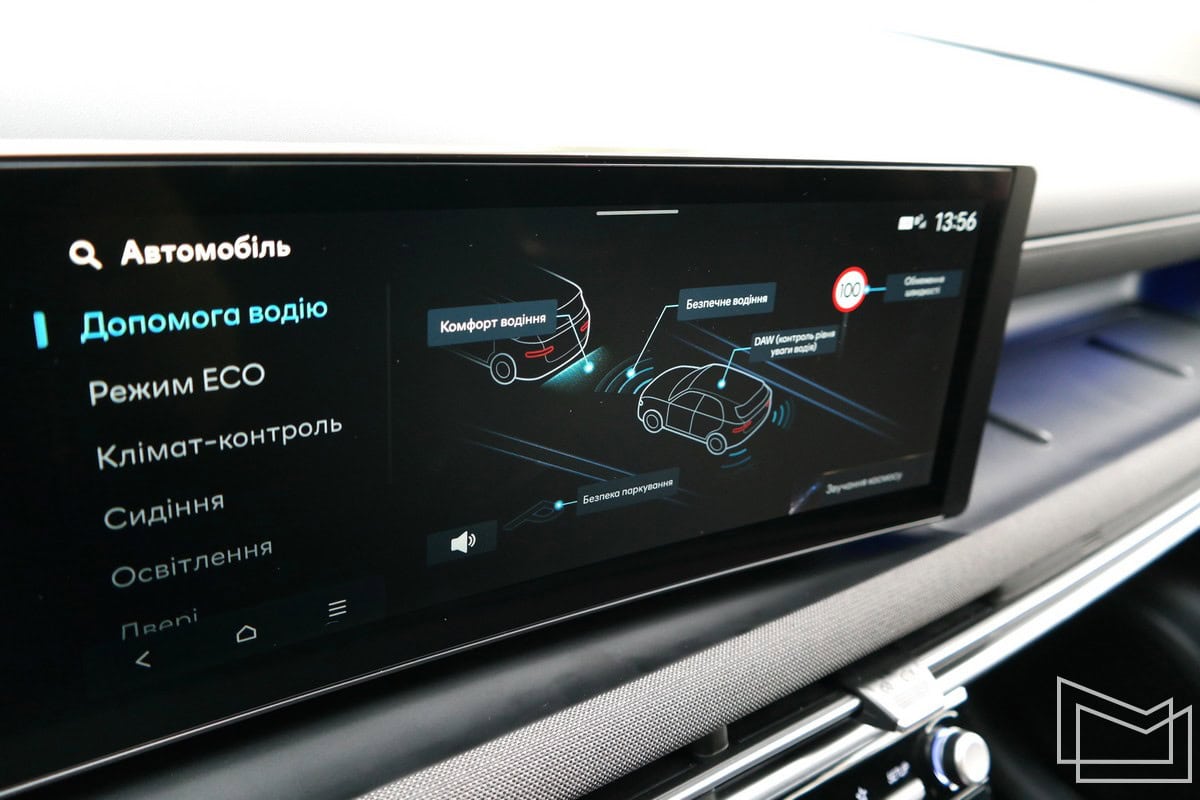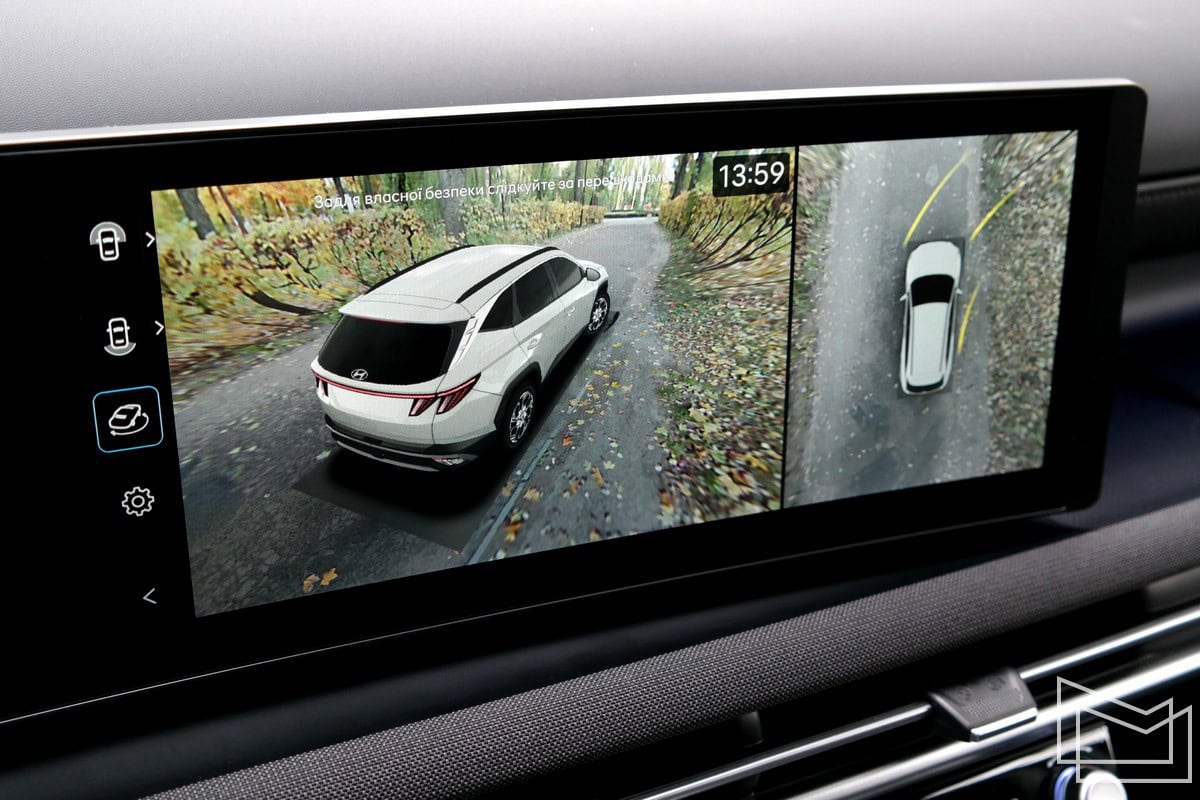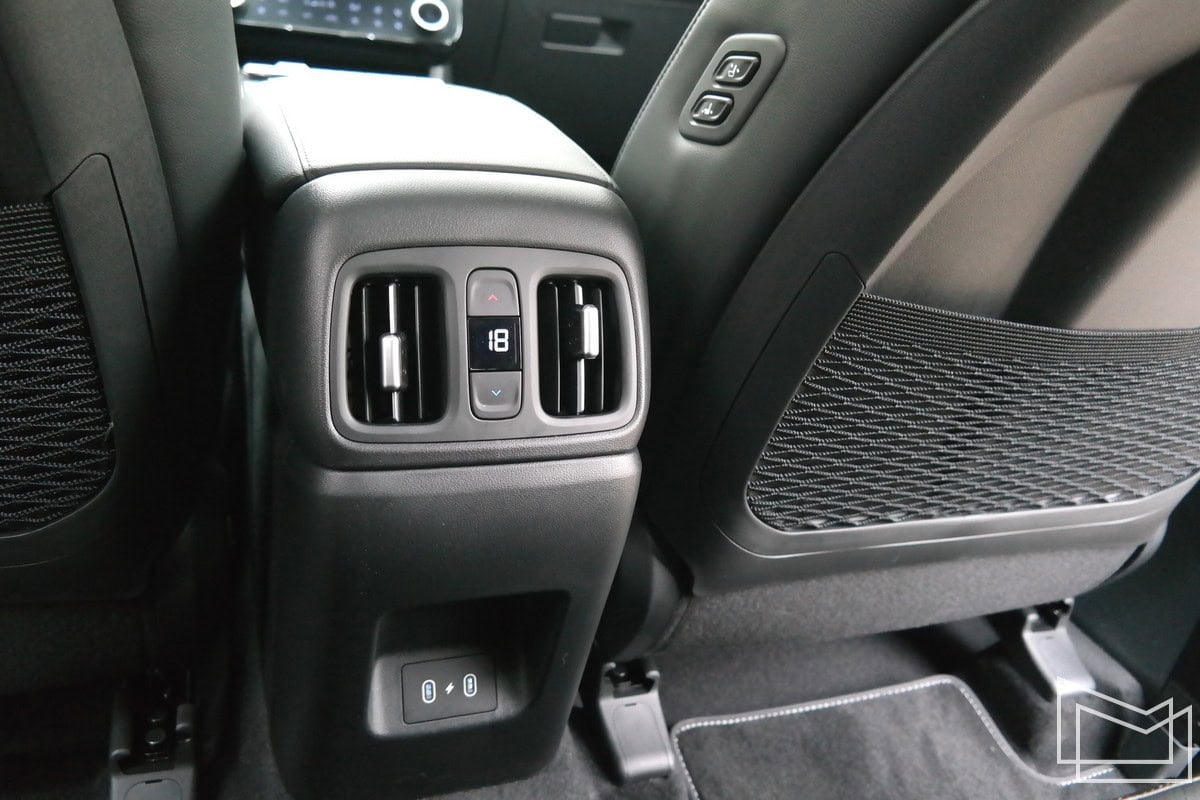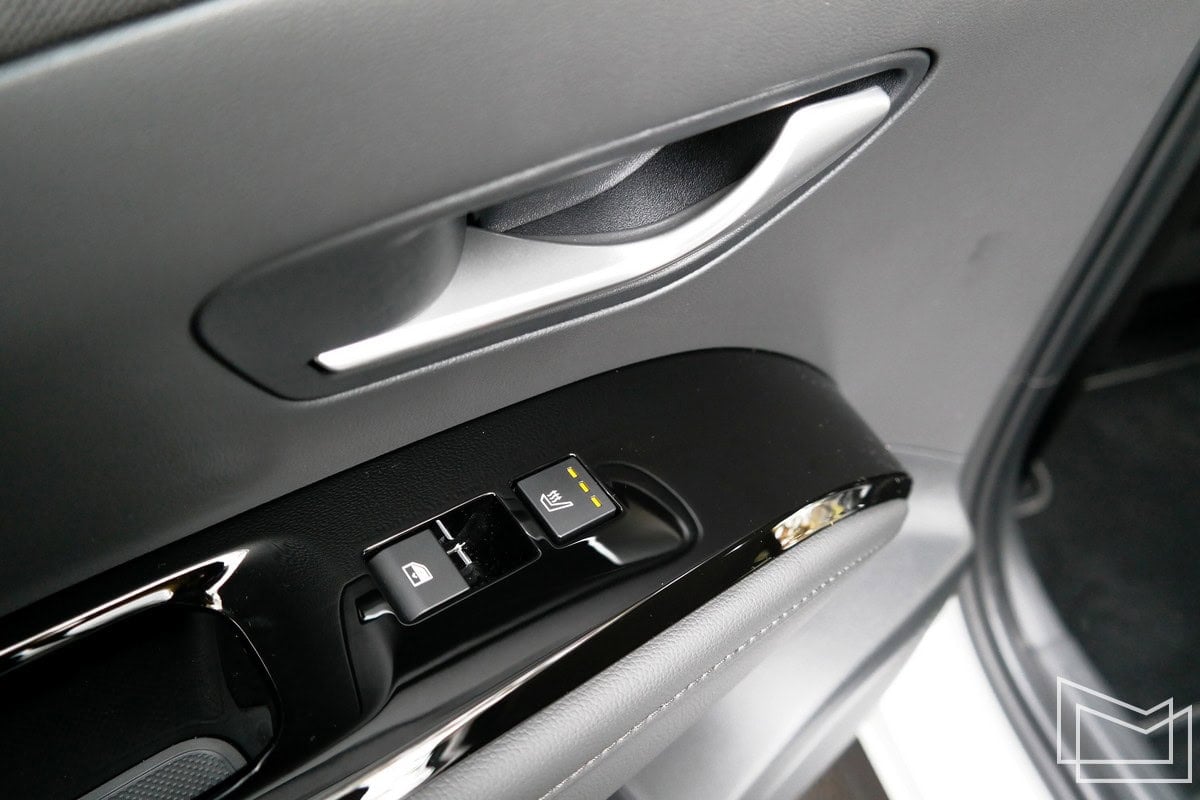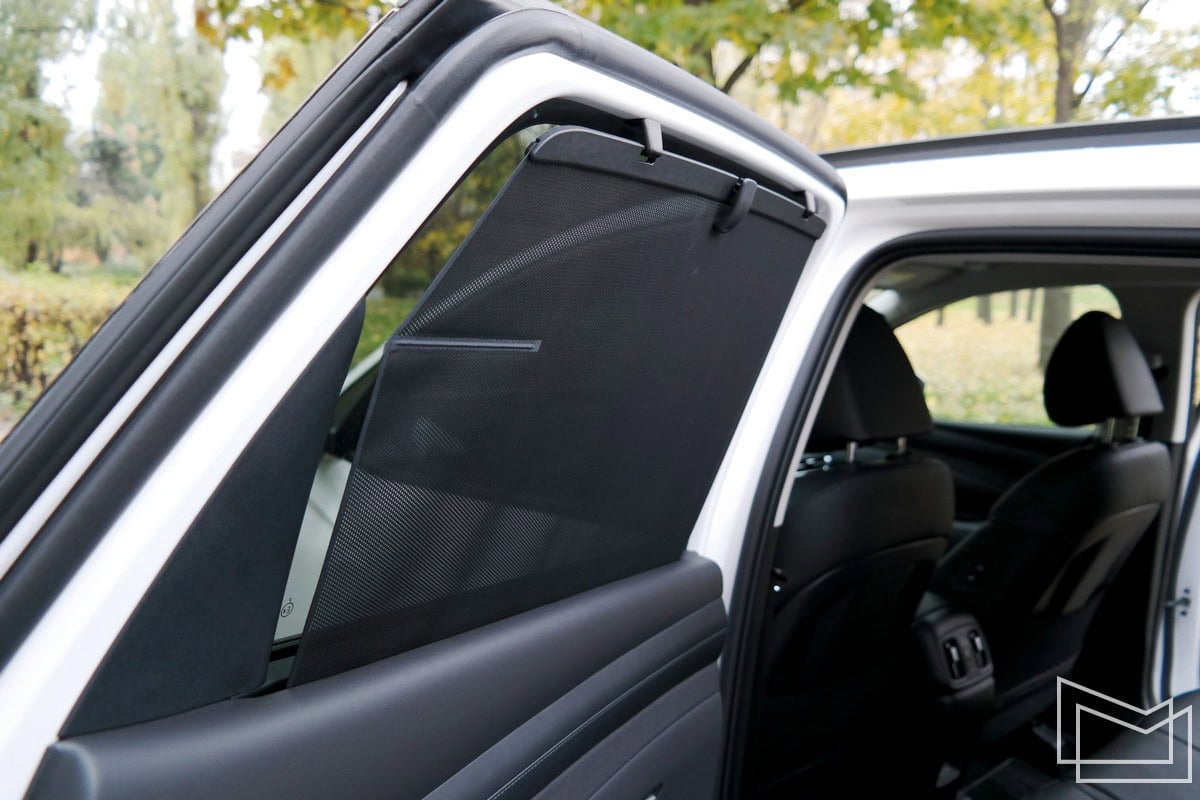The fourth-generation Hyundai Tucson crossover NX4 is already well known in our country: at the beginning of its career, it won the Car of the Year in Ukraine competition, then continued to sell successfully for several years in a row (even in these turbulent times of war), and you can actually meet it on the streets of big cities. And here is the updated Hyundai Tucson! What else can be added to the recipe for an already unconditional success? Let me tell you in the format of the main questions and answers.
Is the updated Hyundai Tucson noticeable?
The Hyundai Tucson has changed significantly and at the same time remained the same. Changed means a new front end: bumper and grille, new design of characteristic LED elements, and matrix headlights (by the way, for the first time for this model). However, the changes have affected not only the front but also the rear: a new bumper has also appeared, and in addition, a larger "wiper" for cleaning the rear window. The point is that in the case of the Hyundai Tucson, changes are not just for the sake of changes, but also for the sake of useful and important improvements: the headlights can "cut" the beam of light to avoid blinding oncoming or passing cars, and the enlarged wiper (its length has increased by 75 mm and now amounts to 350 mm) has correspondingly increased the rear window cleaning area.
It's interesting: there seem to be a lot of new elements that immediately attract attention - but the Hyundai Tucson is unmistakably recognizable. By the sharp lines on the front doors and the extensions around the rear wheels, by the solid headlamp with several sharp "teeth", by the hood with numerous longitudinal dashes, by the characteristic framing of the side windows that smoothly drops and widens in the trunk area. This design still looks quite modern and distinctive on the road. However, if that's not enough attention for you, you can choose from five new body colors and take a closer look at the new line of alloy wheels.
The updated Hyundai Tucsoncrossover (code NX4 PE) has changed significantly and at the same time remained the same. The new front bumper combines silver and gray inserts, and the grille is decorated with LED elements with a translucent mirror finish and dual direction indicators - similar solutions have been seen before, not a little, on the large flagship crossover Hyundai Palisade. There are also matrix headlights and new blacked-out logos (depending on the configuration), new body colors, and new wheel rims. But the general outlines and proportions of the body remain the same, and the dimensions are almost unchanged: length - 4.51 meters; width - 1.865 meters; height - 1.65 meters; wheelbase - 2.68 meters.
That's not bad; but are there any changes in the cabin?
Usually, such scheduled updates involve small exterior changes (as described above) and even smaller changes in the cabin. Not this time, however: the Hyundai Tucson crossover has actually received a completely new front panel! It starts with a pair of 12.3-inch combined displays and a new multimedia system (with support for wireless updates and Android Auto and Apple CarPlay connections), continues with a horizontal line with integrated ventilation deflectors, and ends with a shelf in front of the passenger.
The center console has also been completely redesigned, now in the form of an "island" between the front seats: two cup holders, wireless charging, various buttons and a driving mode switch have been arranged here. But the buttons for heating and ventilation of the front seats have disappeared - where did they go? They were integrated into a new climate control unit that combines round knobs and a touch panel with traced buttons. But where did the automatic gearshift lever go? It's right there - in the form of a joystick under the steering wheel. By the way, the steering wheel is also new: with thin spokes and four dots instead of the usual logo; although these four dots represent the letter "H" in Morse code.
As for the rear of the cabin, everything was fine before - and it remains so. Today, there are already competitors that offer more space in the rear, wider door opening, and the possibility of longitudinal adjustment of the sofa: this is where the Hyundai Tucson crossover is inferior. Nevertheless, there is still enough headroom and legroom behind the passengers (just not too much), the back of the sofa can be set at a convenient angle, there is an armrest and cup holders, and in the maximum configurations there is even a separate climate zone and heated rear seats. Just understand: the current generation Hyundai Tucson crossover has received so many advantages and amenities for rear passengers since the beginning of its career that they still allow it to be called one of the best in class. The situation is the same with the trunk: it's quite large, with the correct rectangular shape and well-designed details; we just want to add soft side trim instead of the harsh hard plastic.
The front part of the Hyundai Tucson's interior is now made in the style of the Hyundai Sonata and Hyundai Santa Fe: a pair of combined 12.3-inch displays; an original (though not very practical) climate control unit and buttons above it; a new four-dot steering wheel and automatic transmission switch below it; a horizontal line with integrated ventilation deflectors. The center console has been redesigned to include a functional "island" and a large niche-shelf for bags. The rear was still good: plenty of space and comfortable seating, heated seats and ventilation for passenger comfort. The trunk of the hybrid version offers a volume of 616 liters, an electric lid, a two-level floor, and more.
What about technical changes? Has anything improved?
It seems that with such a list of changes, the Hyundai Tucson crossover may have already calmed down. But not so: the updated car has prepared a few more surprises, this time technical ones. The most important point is the new version: a 2.5-liter 190-horsepower gasoline engine, a classic 8-speed automatic and mandatory all-wheel drive - a great option that I hope to talk about in the future. In addition, cars with already known engines have also received certain changes: modified suspension, double-glazed side front windows, new fenders and improved sound insulation - all for comfort and quietness in the cabin. In addition, the permissible peak power of the electric motor has been slightly increased in the hybrid powertrain (it was 44.2 kW, and now it is 47.7 kW), which could potentially increase the power of the hybrid by just 5 hp plus - and keep the total power at 235 hp. I say "potentially" because the influence of the new Euro 6e environmental class must also be taken into account. Because of this, the hybrid powertrain has been slightly deformed, and now the technical specifications show a figure of 215 hp of total power.
Саме в такому гібридному виконанні й було представлено тестовий автомобіль. Якщо коротко сказати, то – ось наче зміни є, але реально вони не відчуваються. Проте це тому, що Hyundai Tucson від початку вийшов дуже вдалим! Наприклад, у нього складний гібрид – поєднання 1,6-літрового турбодвигуна, електромотору, автоматично 6-ступеневої коробки передач (що рідкість для гібрида). Тобто, тут багато окремих елементів. Але вони налаштовані настільки вдало та чітко, що під час руху ви жодного разу не помітите перемикань передач або окремого чи одночасного спрацювання двигунів – всі перемикання, операції, дії всередині гібриду відбуваються дуже м’яко та гладко, рух та прискорення буквально на одній лінії.
The electric motor almost always starts the car, but the gasoline engine kicks in quite early - you recognize it not by a jolt or a shift, but by the characteristic sound. It seems that acceleration in the first seconds is not impressive; however, then comes the cool traction: everything is as it should be for a small turbo engine, which begins to open up from the mid-range (3-4 thousand) and then reaches 5.5-5.8 thousand without problems and dips. It turns out that at the beginning of the movement, the car is quite smooth and does not frighten with sharp "jumps" forward, but thanks to the support of the electric motor, it is always capable of rapid acceleration. But if you need more, you should press the accelerator pedal and continue to enjoy the careful pull and subsequent acceleration. How active is it? According to the passport data, 0-100 km/h is claimed to be 8.2-8.5 seconds depending on the type of drive (and 186 km/h top speed), but according to my measurements for the test car with all-wheel drive, it turned out to be much better: about 7.8 seconds. This result allows the Hyundai Tucson hybrid to hold the title of one of the most dynamic crossovers in its class.
However, such power and dynamics do not make it sporty. Quite the contrary: for Hyundai Tucson, the main thing is driving comfort. Even with the 19-inch wheels on the test car, it still rides quite softly and comfortably, trying to carefully hide road irregularities. I would even say that the Hyundai Tucson crossover rides very carefully, carefully, carefully for its passengers: you can barely hear the suspension, feel slight body vibrations, but no hard jolts or strong swaying - a very pleasant car for passengers. And for the driver: light steering wheel and clear reactions, moderate rolls in corners, almost no delay in turning the steering wheel. By the way, it's interesting that the steering wheel itself makes less than 2.5 turns from stop to stop, which makes it sharper than is usually accepted for cars of this format (2.5-2.7 turns from stop to stop). However, you don't want to "fly" on the road and dash around corners. Instead, the Hyundai Tucson crossover sets you up for a calm (but not necessarily slow) driving style.
Finally, a few words about the different driving modes. Probably the most commonly used mode will be ECO: there is enough power, the engine's response to the accelerator pedal is smooth, the digital instrument cluster shows the hybrid system's performance indicator, and the switches under the steering wheel allow you to select the degree of recovery (1-2-3 or AUTO) during deceleration. An alternative is the SPORT mode: in this case, the response to the accelerator pedal becomes sharper, the yellow-orange tachometer shines on the instrument panel, the hybrid system only occasionally allows electric drive, and the paddles under the steering wheel are already responsible for shifting gears in the transmission. There are also three off-road modes, which are initially activated with the TERRAIN button and then selected with the switch. Each of these modes provides for more active use of all-wheel drive. Here's the kicker: even in ESO mode, the start is given on all-wheel drive - but then the clutch is "released" and further movement takes place on the front-wheel drive; in off-road modes, on the other hand, the all-wheel drive clutch remains closed for a longer time (especially when selecting MUD or SAND), and therefore the rear wheels are almost always active and pushed by the car. The engine's response to the accelerator pedal is also different: for example, in SNOW mode, everything happens very slowly and as smoothly as possible to avoid wheel slip. But in other modes, there is no such restriction - probably to allow for wheel slip and tread self-cleaning. Add a downhill assist system and a fairly rigid body (it doesn't warp when one of the wheels comes off the road), but subtract the moderate ground clearance (17 cm) and relatively small wheel travel. As a result, we get a typical crossover; however, most of its features will be enough.
The design of the Hyundai Tucsonhybrid system has already been analyzed indetail in a separate article; but in short: a 1.6-liter gasoline turbo engine, an electric motor and a 6-speed automatic, a battery under the rear seat, front or all-wheel drive; and all-wheel drive is implemented using the traditional method - using a driveshaft, not a separate electric motor to drive the rear wheels. As for the dynamics, the updated hybrid crossover Hyundai Tucson seems to have forgotten about all these nuances with power fluctuations and just does its job: the qualifying "hundred" is given in 7.8 seconds - such a Hyundai Tucson is still good at dynamics! But it's not very good at economy: in the city it consistently gets 7-7.5 liters, my minimums were about 6.5 liters, but the maximums sometimes reached 9-10 liters - this is not much for an 8-second crossover with 200+ horsepower, but there are more economical hybrids among competitors. On the highway at 100 km/h, fuel consumption is about 6 liters per 100 km.
How much does the updated Hyundai Tucson crossover cost?
As before the update, the Hyundai Tucson offers a very wide range of versions: a 2.0 MPi gasoline engine (156 hp) or a new 2.5 GDi engine (190 hp), a 1.6 CRDi turbodiesel engine (136 hp), a powerful 1.6 T-GDi HEV hybrid (215 hp).), front or all-wheel drive, manual or automatic transmission (hydromechanical "automatics" or "robot automatics"), four trim levels to choose from - a total of 15 car variants.
The range is opened by the Hyundai Tucson Express, which offers: front and side airbags, inflatable side curtain airbags, stabilization system, cruise control, dual-zone climate control, engine start button and keyless entry, heated steering wheel and front seats, front and rear parking sensors, a rearview camera, a multimedia system with a 12.3-inch touchscreen display and support for Apple CarPlay and Android Auto, a digital instrument cluster with a 4.2-inch display, LED headlights, 17-inch alloy wheels, etc. The price of Hyundai Tucson 2.0 MPi 6MT 2WD Express - from 1.17 million UAH or $28 thousand.; price Hyundai Tucson 2.0 MPi 6AT 2WD Express - from 1.2 million UAH or $29 thousand.
The next step is the Hyundai Tucson Dynamic, which comes with lane departure warning and lane keeping assist, camera-based collision avoidance assist, multicolor interior lighting, decorative metallic door trims, and much more; the list of available engines and drive options has also been significantly expanded for this configuration. The price of Hyundai Tucson 2.0 MPi 6AT 2WD Dynamic starts from UAH 1.26 million or $30.4 thousand; the price of Hyundai Tucson 2.0 MPi 6AT 4WD Dynamic - from 1.33 million UAH or $32 thousand; Hyundai Tucson price 1.6 CRDi 7DCT 2WD Dynamic - from 1.36 million UAH or $32.8 thousand.; price Hyundai Tucson 1.6 CRDi 7DCT 4WD Dynamic - from 1.43 million UAH or $34.5 thousand; price Hyundai Tucson 1.6 T-GDi HEV 6AT 2WD Dynamic - from 1.61 million UAH or $38.7 thousand.
Next is the Hyundai Tucson Elegance, which additionally offers: adaptive cruise control, camera- and radar-based collision avoidance assistant, recommended speed setting assistant, electric trunk lid, three-zone climate control with rear ventilation deflectors, wireless charging, support for "digital key" technology (NFC access via smartphone or watch), full-size 12.3-inch digital instrument panel, combined interior trim (eco-leather + fabric), matrix headlights, LED taillights, dimmed headlights and lights, DARK CHROME grille, 18-inch alloy wheels, etc. The price of Hyundai Tucson 2.0 MPi 6AT 2WD Elegance starts from UAH 1.4 million or $33.7 thousand; the price of Hyundai Tucson 2.0 MPi 6AT 4WD Elegance - from 1.47 million UAH or $35.4 thousand; Hyundai Tucson price 1.6 CRDi 7DCT 4WD Elegance - from 1.59 million UAH or $38.3 thousand; Hyundai Tucson price 1.6 T-GDi HEV 6AT 4WD Elegance - from UAH 1.83 million or $44 thousand.
Finally, the maximum variant is the Hyundai Tucson Tor, which additionally offers the following: mirror blind spot monitoring and video blind spot monitoring on the instrument cluster, collision avoidance assistant when reversing (rear cross traffic alert), power driver and passenger seat adjustments, memory settings for the driver's seat, front seat ventilation, heated rear seats, AVM surround view system, KRELL premium acoustics, rear door sunshades, 19-inch alloy wheels, tinted glass, etc. Price of Hyundai Tucson 2.0 MPi 6AT 4WD Tor - from UAH 1.67 million or $40 thousand; price of Hyundai Tucson 2.5 GDi 8AT 4WD Tor - from 1.72 million UAH or $41.4 thousand; Hyundai Tucson price 1.6 CRDi 7DCT 4WD Tor - from 1.79 million UAH or $43 thousand; Hyundai Tucson price 1.6 T-GDi HEV 6AT 4WD Tor - from 2.02 million UAH or $48.7 thousand.
TheHyundai Tucsoncrossover is able to surprise with the level of equipment in the pre-maximum or maximum configurations, even if they are quite expensive: matrix headlights and a dark chrome grille, a full-screen digital instrument panel, a three-dimensional 3 D surround view, a separate climate zone and heated rear seats, window blinds and 19-inch wheels, and a wide range of driver assistance systems. However, the latter are quite annoying and activate every time you start the engine: you turn something off, and the next time this system works again and beeps loudly in the cabin. In addition, I note that the new 2.5-liter engine paired with all-wheel drive and an 8-speed automatic is available only in the maximum configuration, and I would like to see such equipment in more affordable configurations. Finally: yes, the initial variants of the car offer only a moderately sufficient list of equipment; however, they attract with a starting price - the crossover Hyundai Tucson in the basic versions is currently one of the most affordable in its class.
Instead of summarizing: should I buy or not?
Frankly speaking, I like the Hyundai Tucson crossover in its current generation: it rides quite nicely, provides good comfort and is easy to drive, it has a wide range of versions to suit every taste and budget (a familiar gasoline engine, an economical turbodiesel engine, a technological hybrid), and the designers have worked out many details for safety and just for your daily convenience. This list of advantages is already enough to ensure good sales - and it seems that it was enough to carry out a minimal update at the level of "bumper lights" to maintain attention for several years in a row. However, even here, Hyundai Tucson has exceeded expectations by offering a significantly redesigned interior, numerous technical changes, and even the introduction of a new engine in the Ukrainian model range. This is truly a great car that deserves a high 8-point rating and unequivocal recommendations for purchase.


